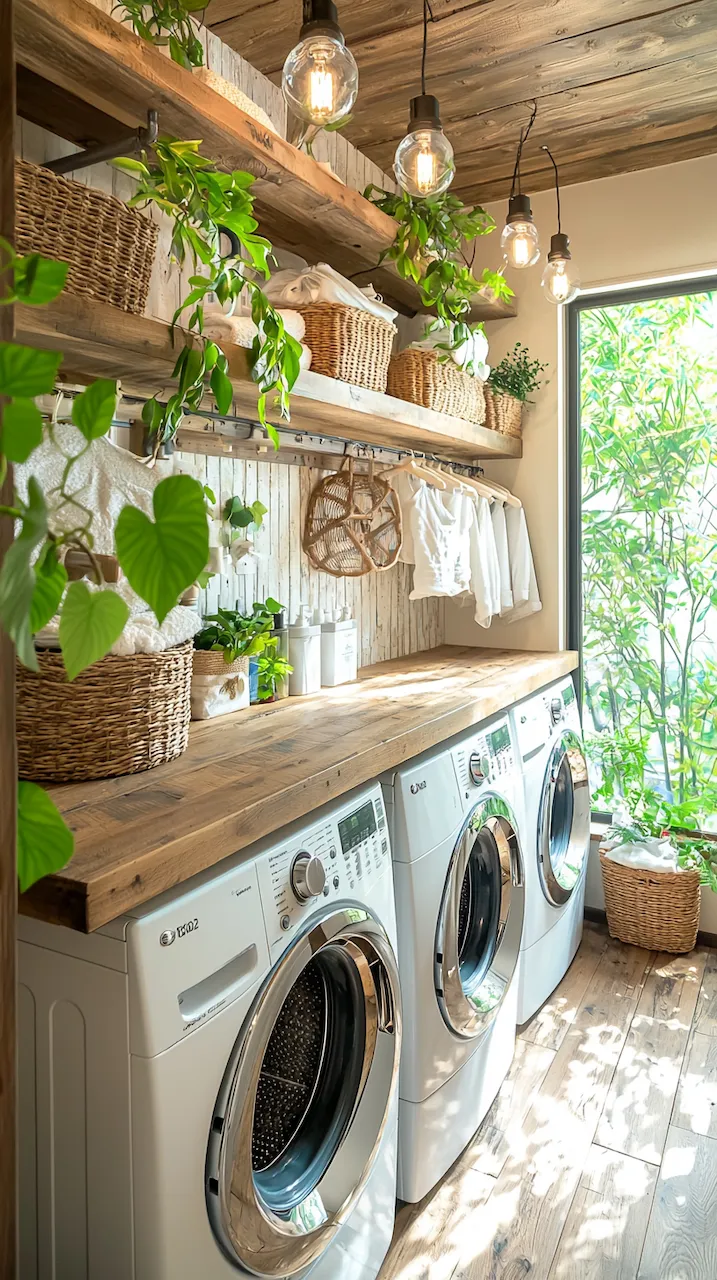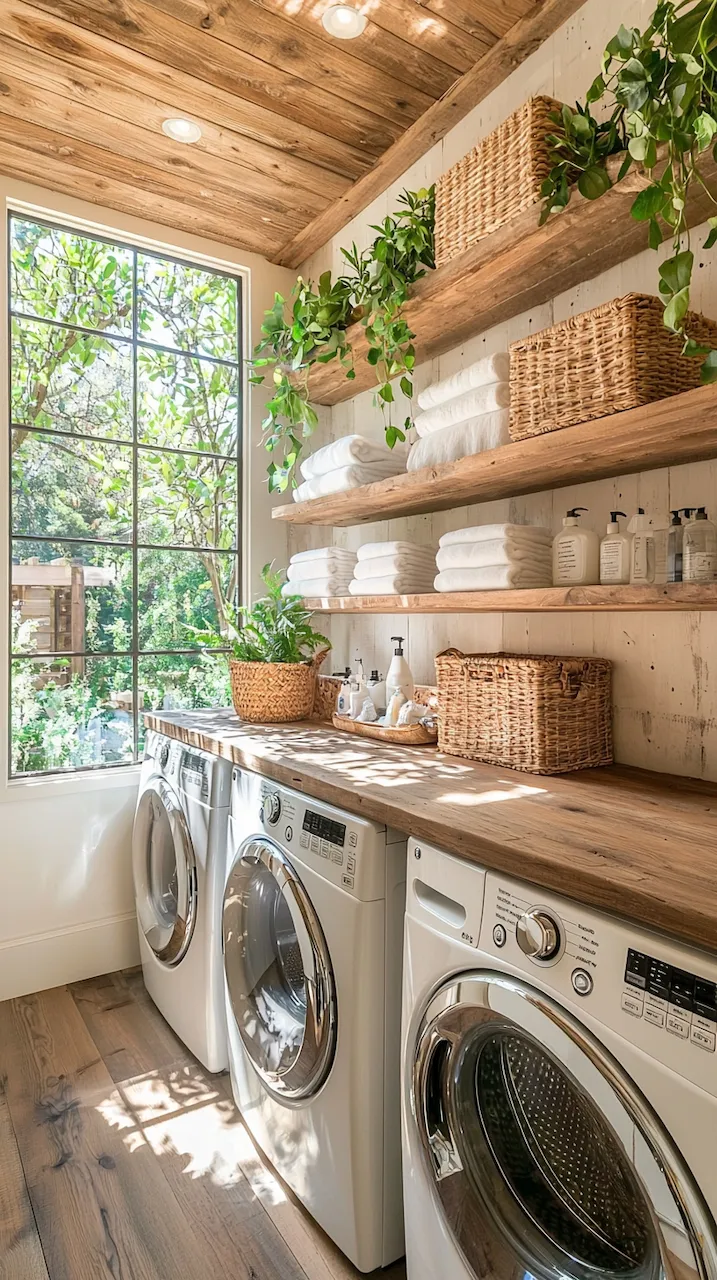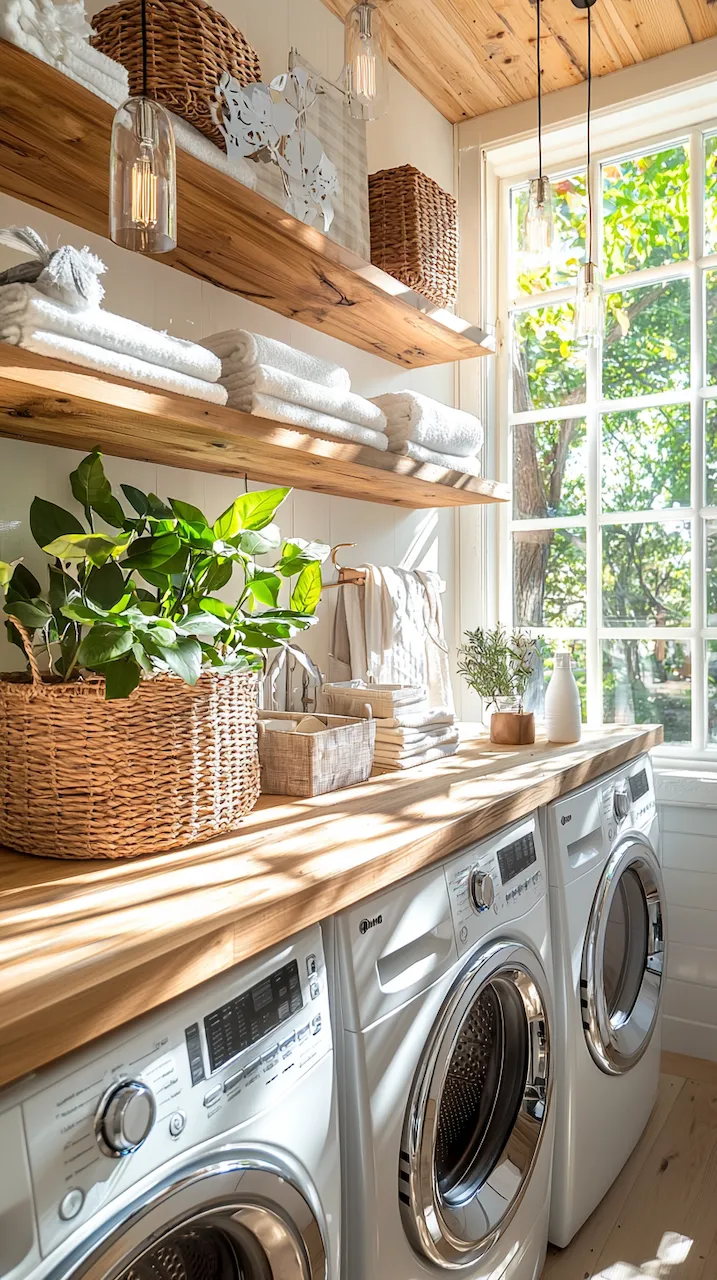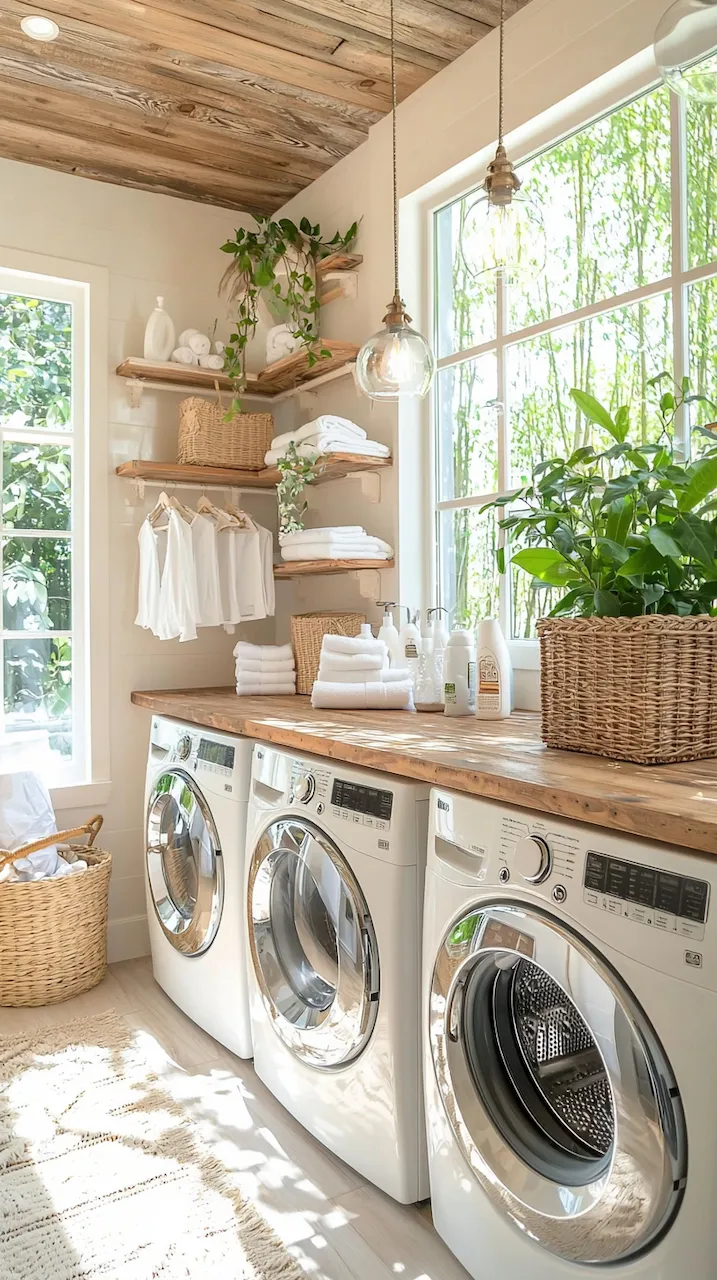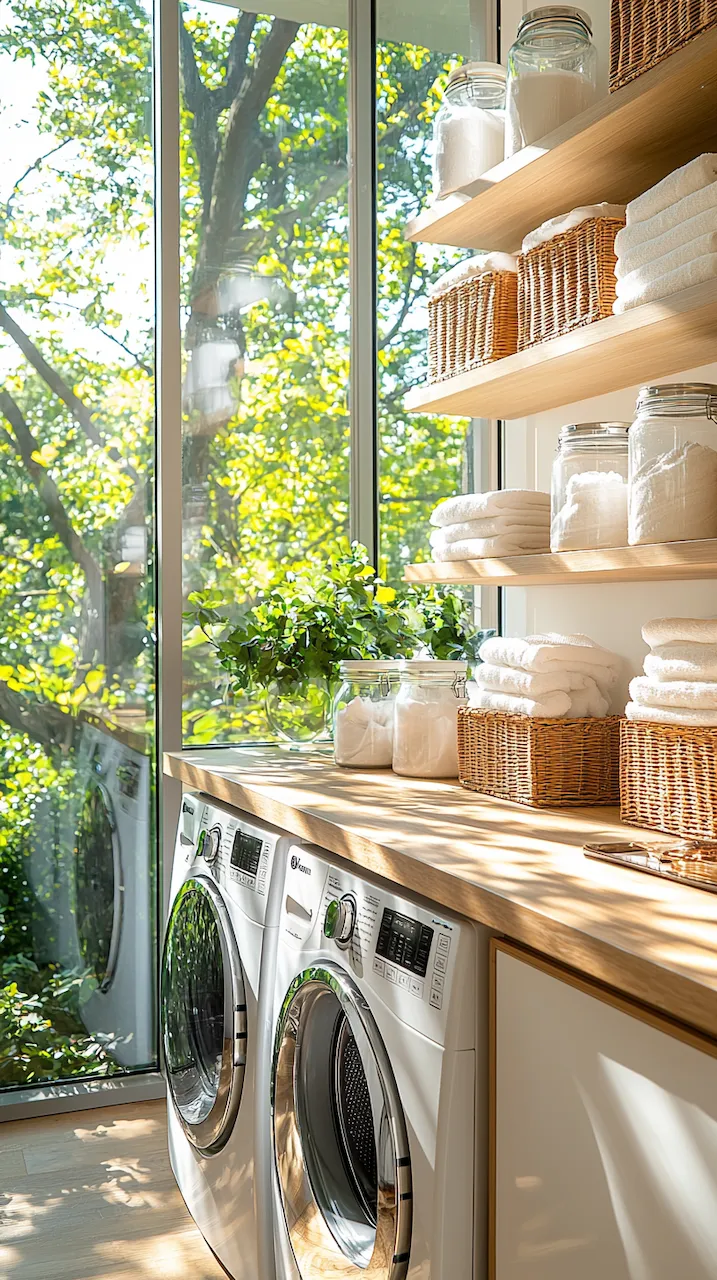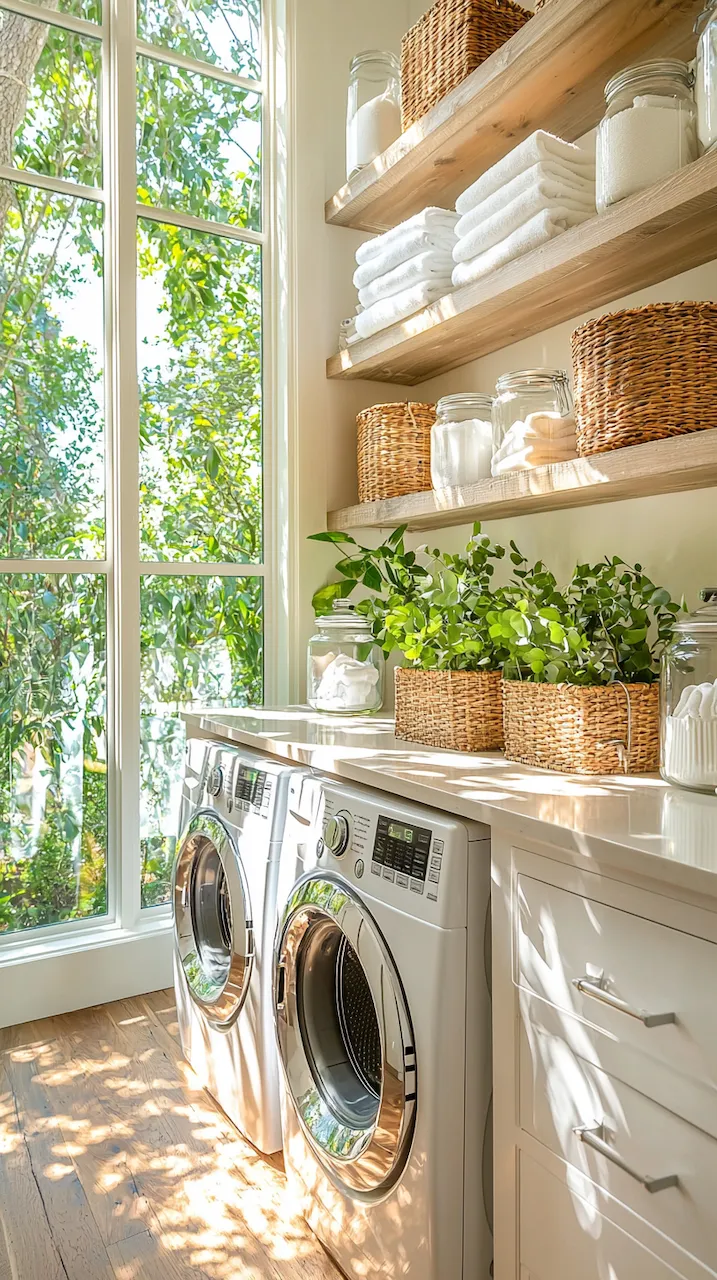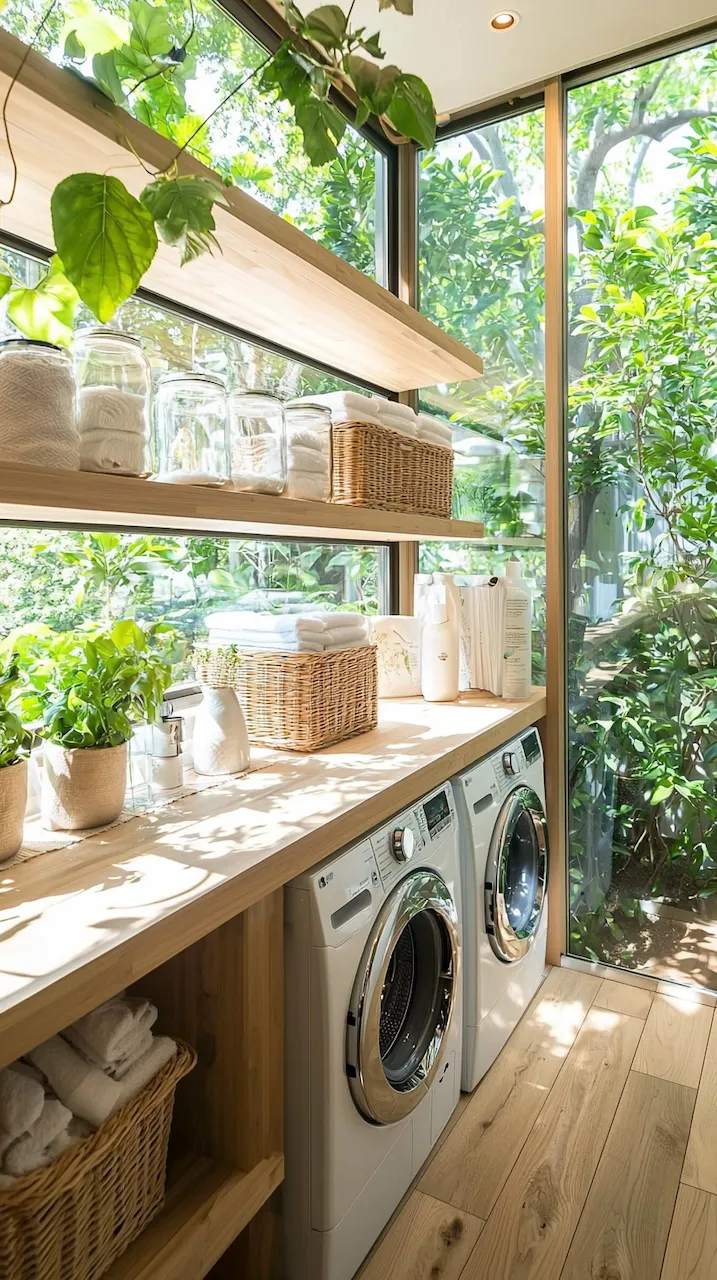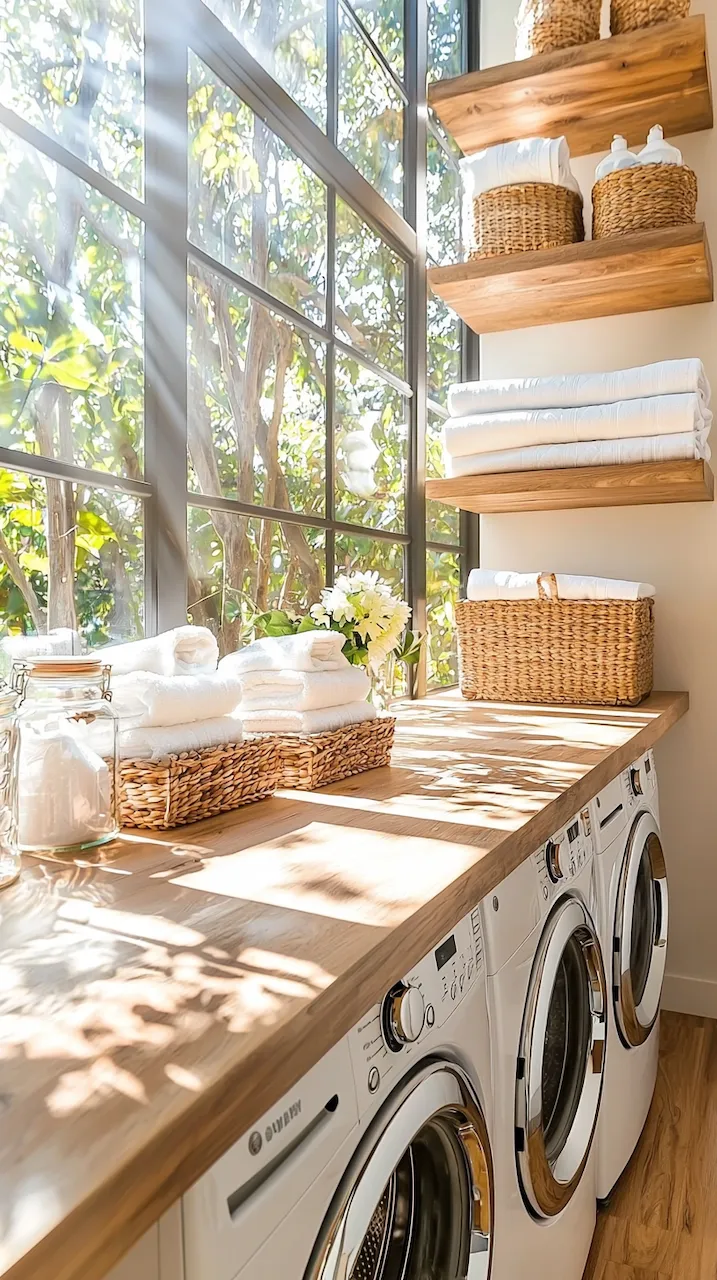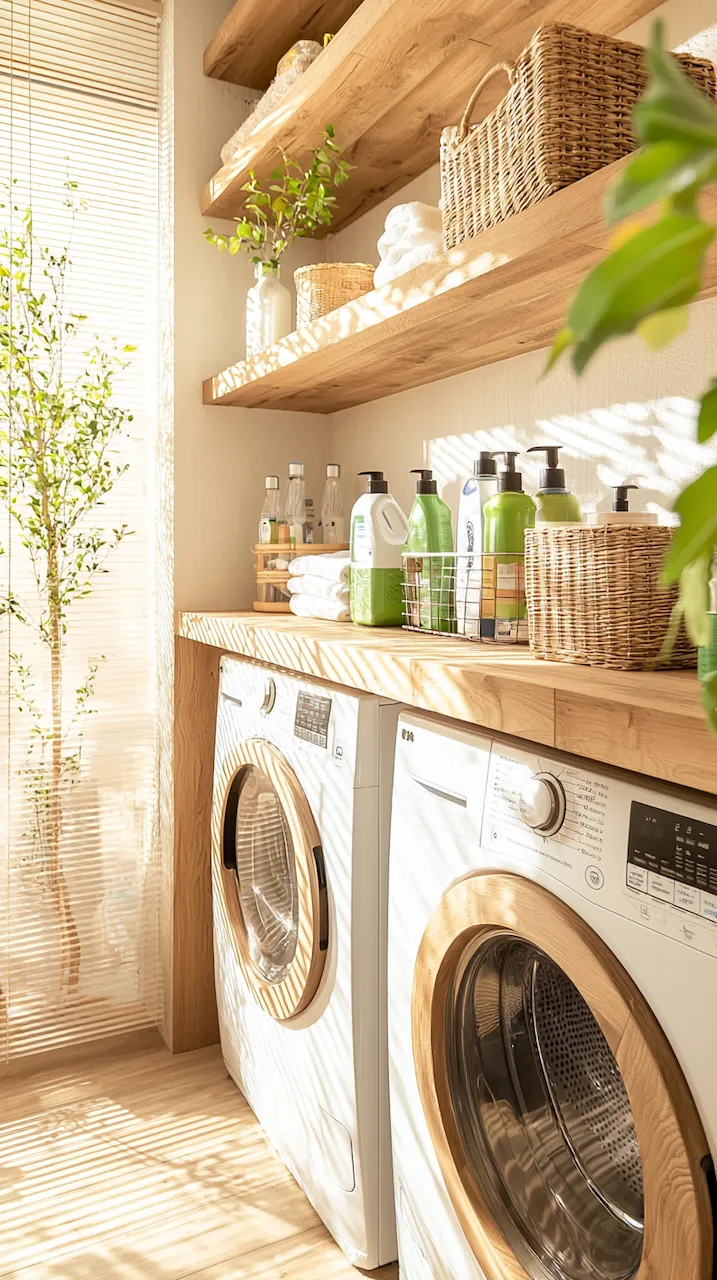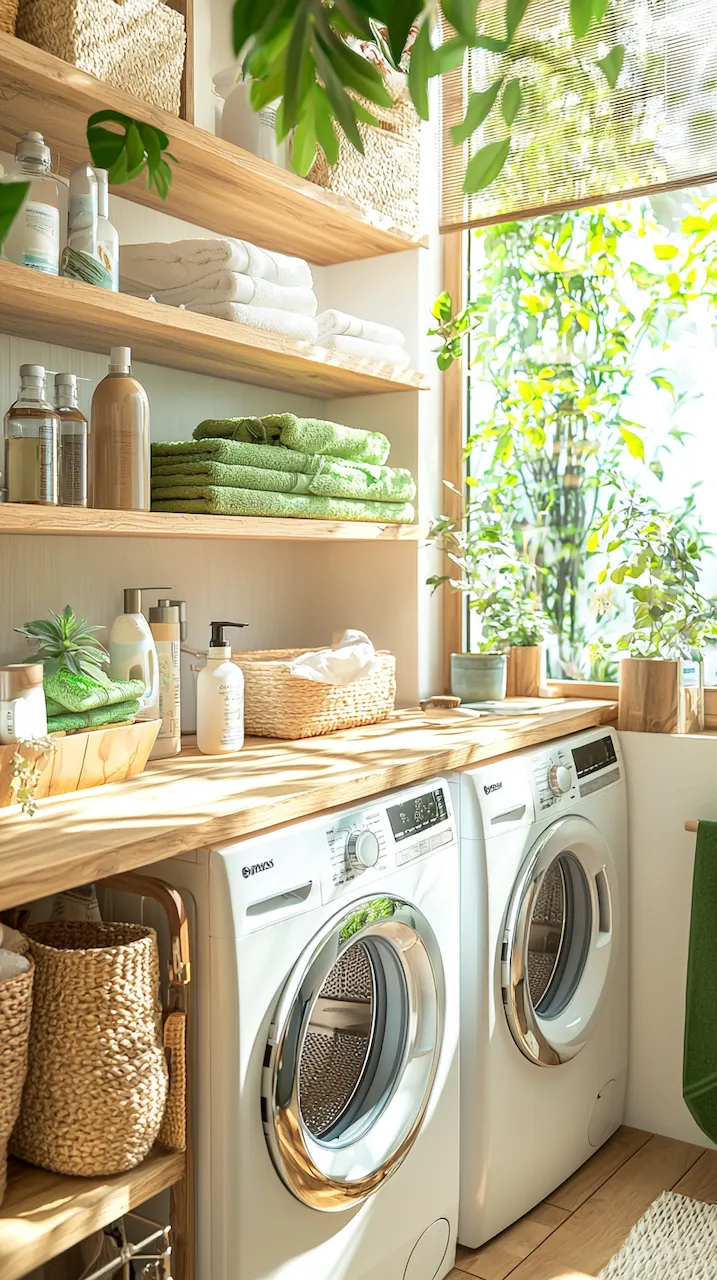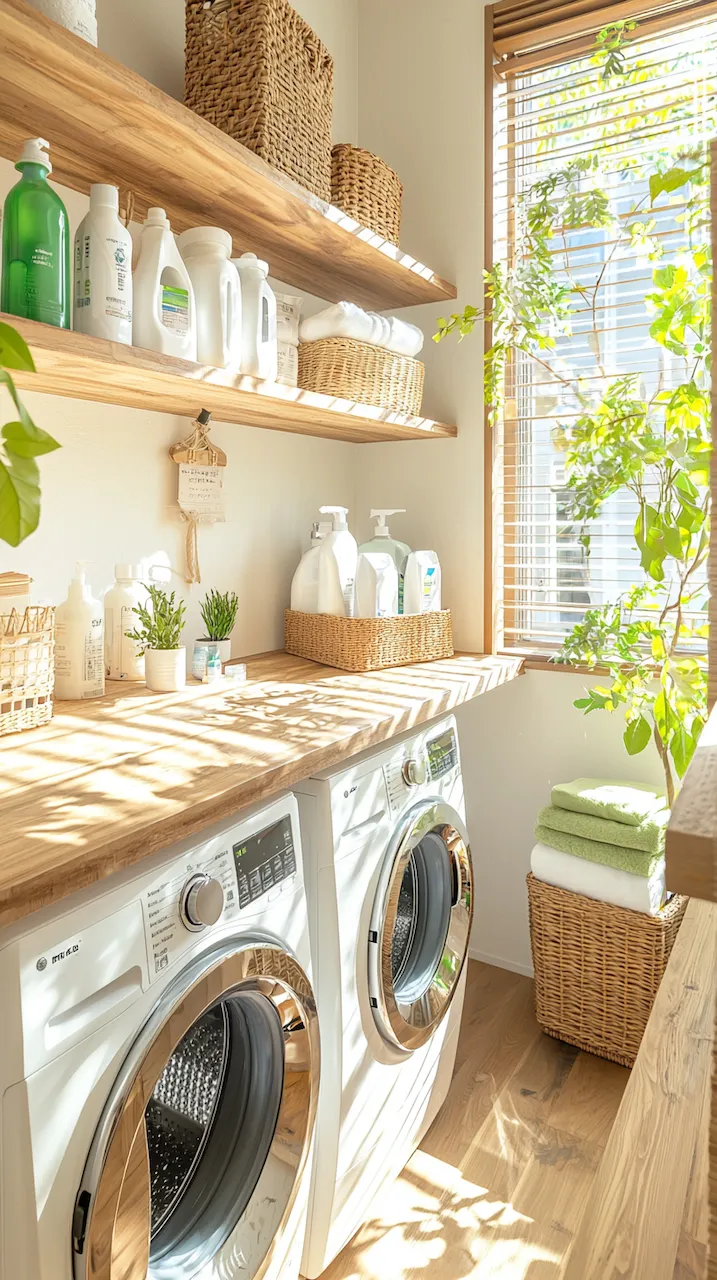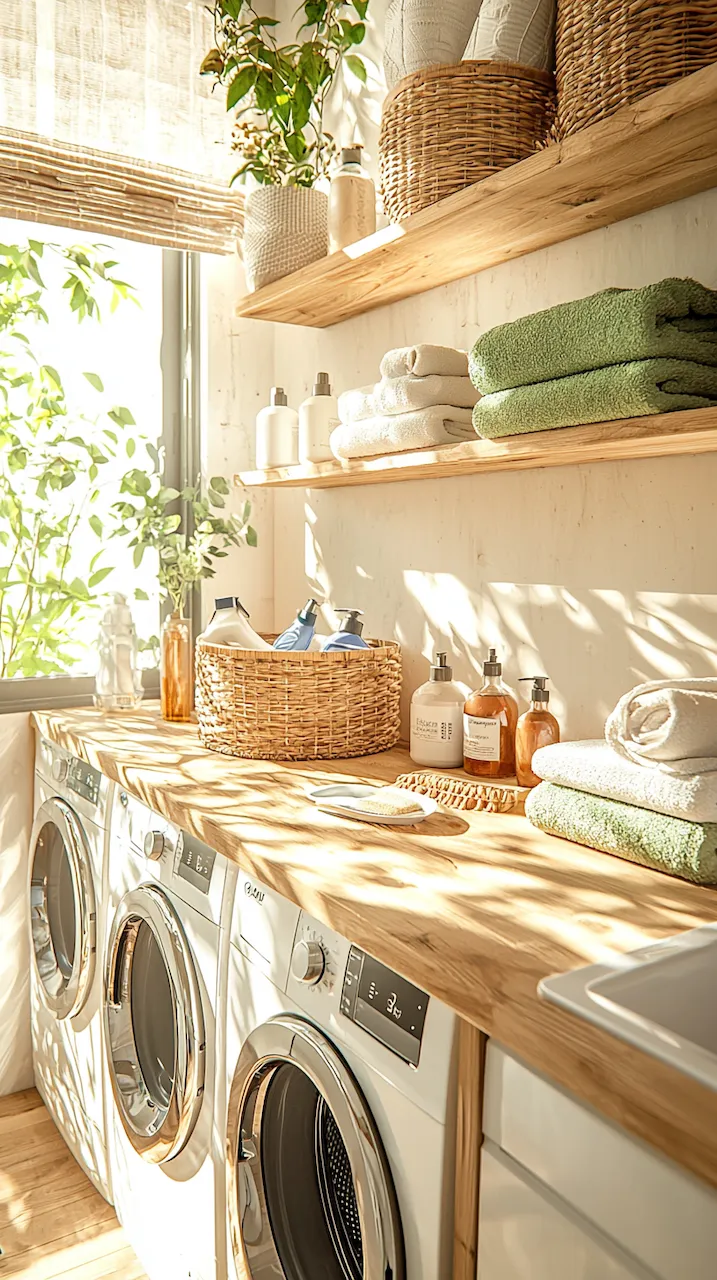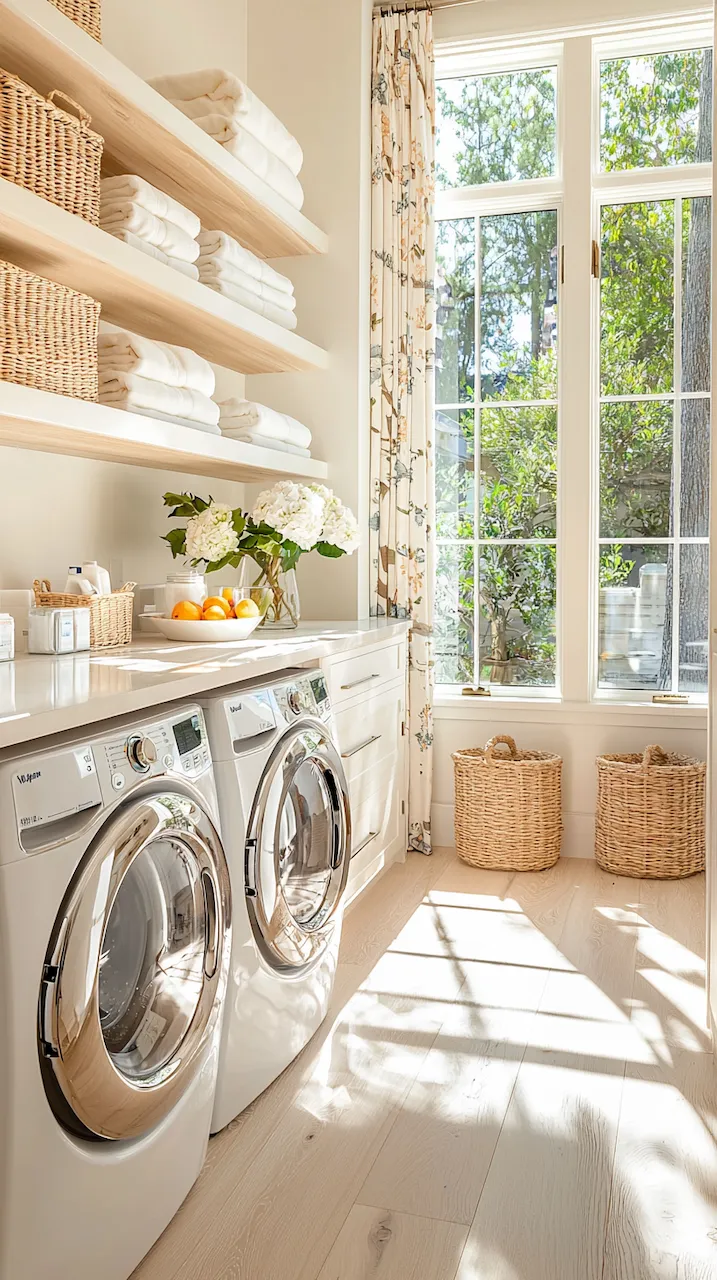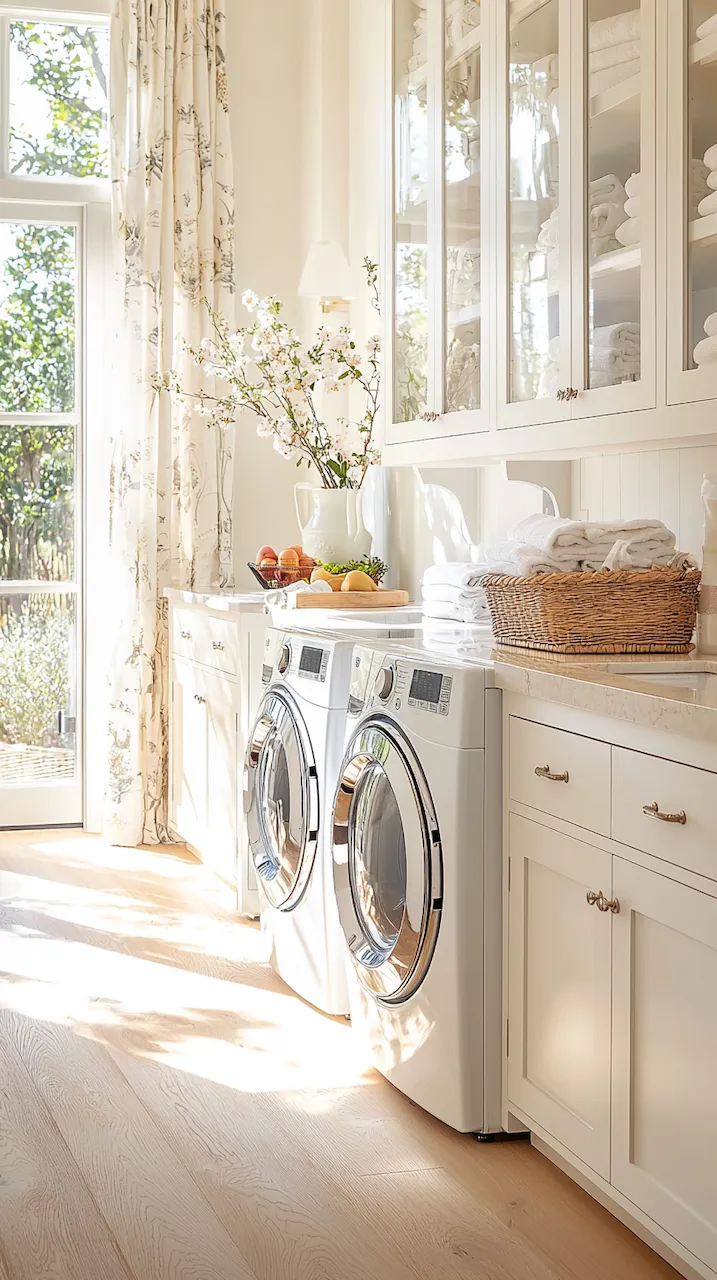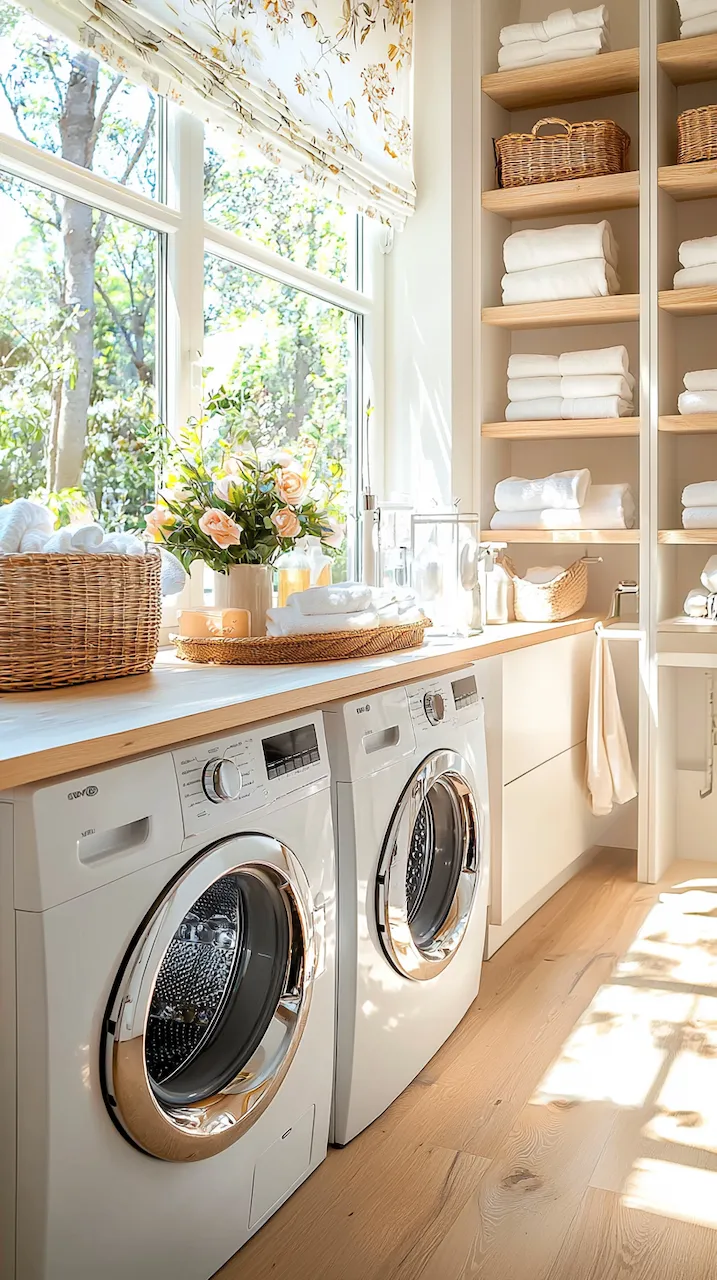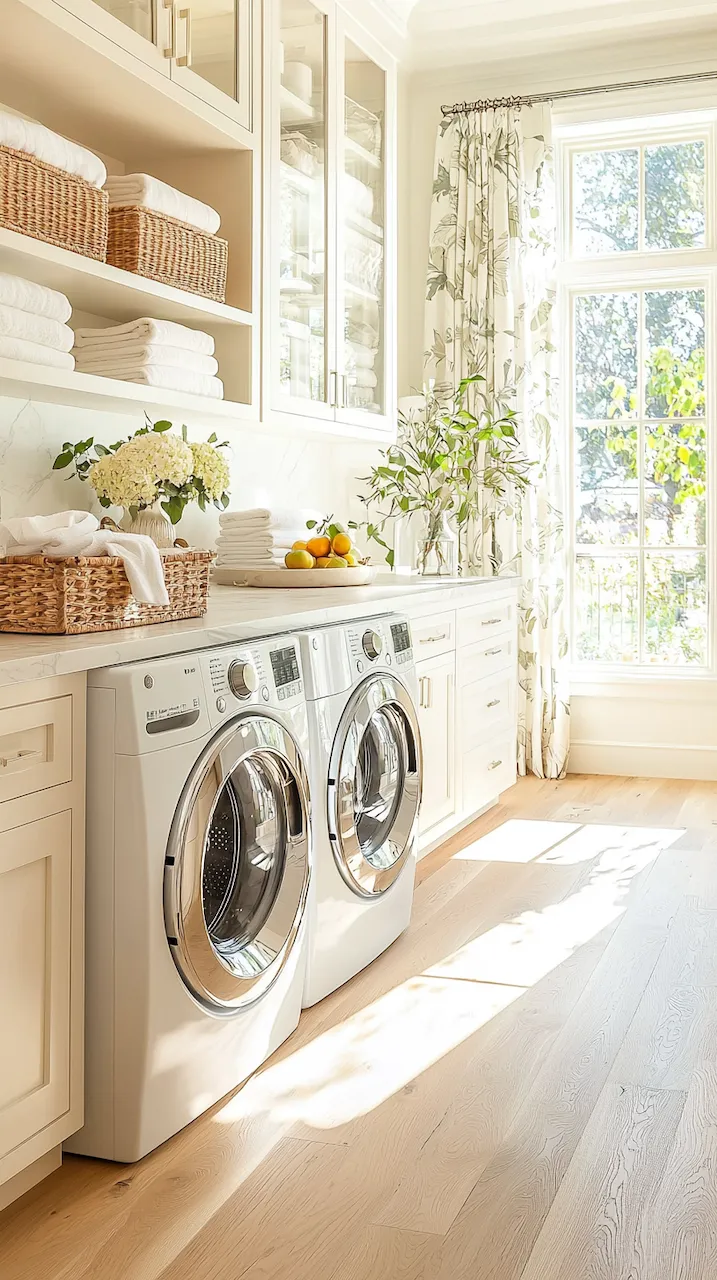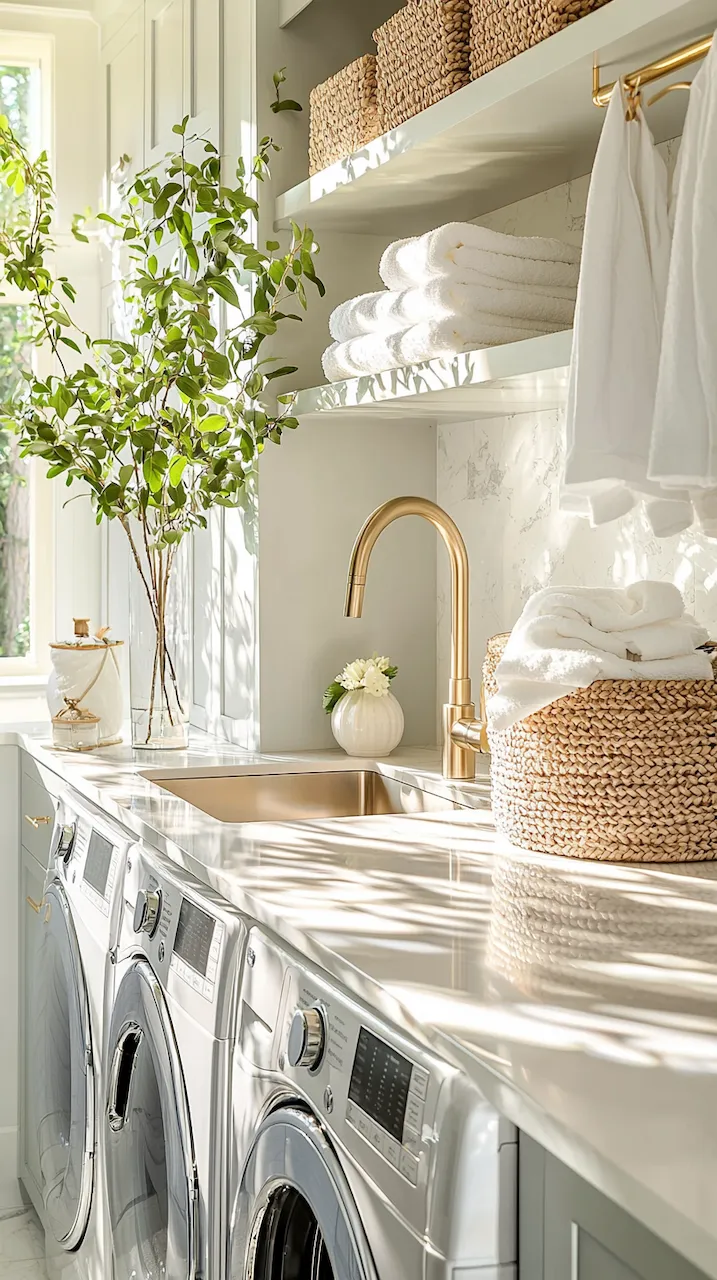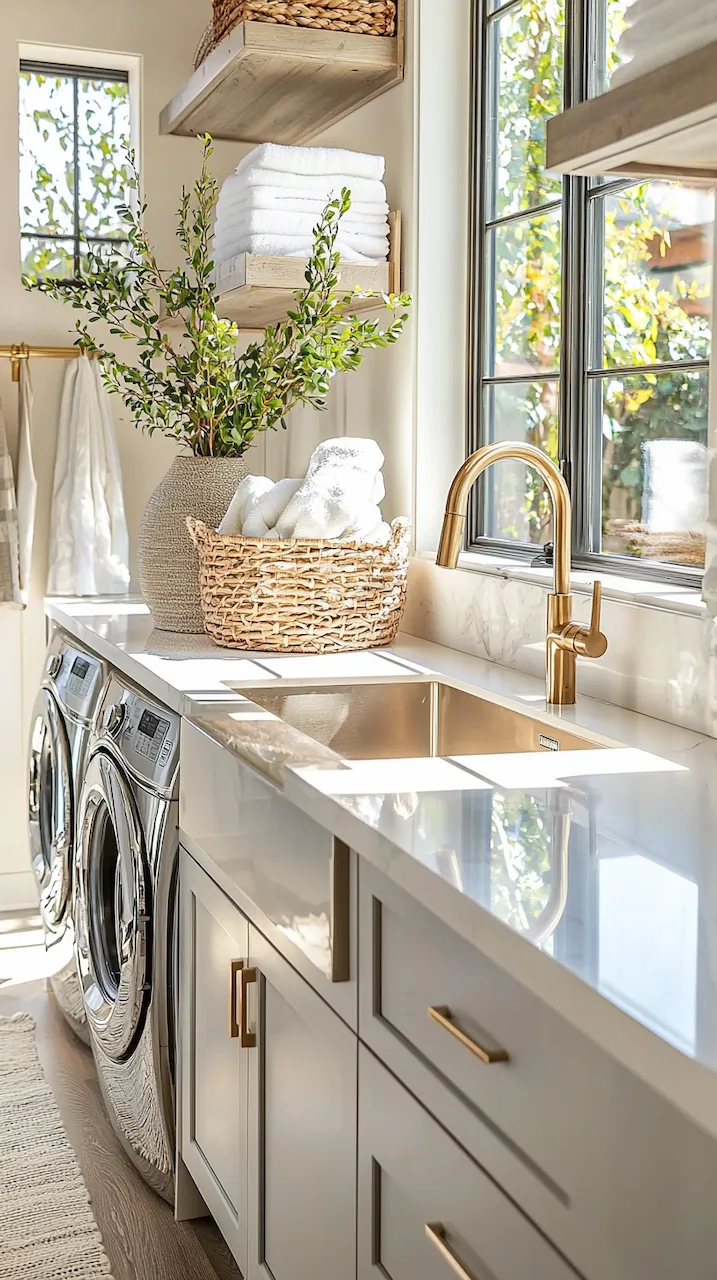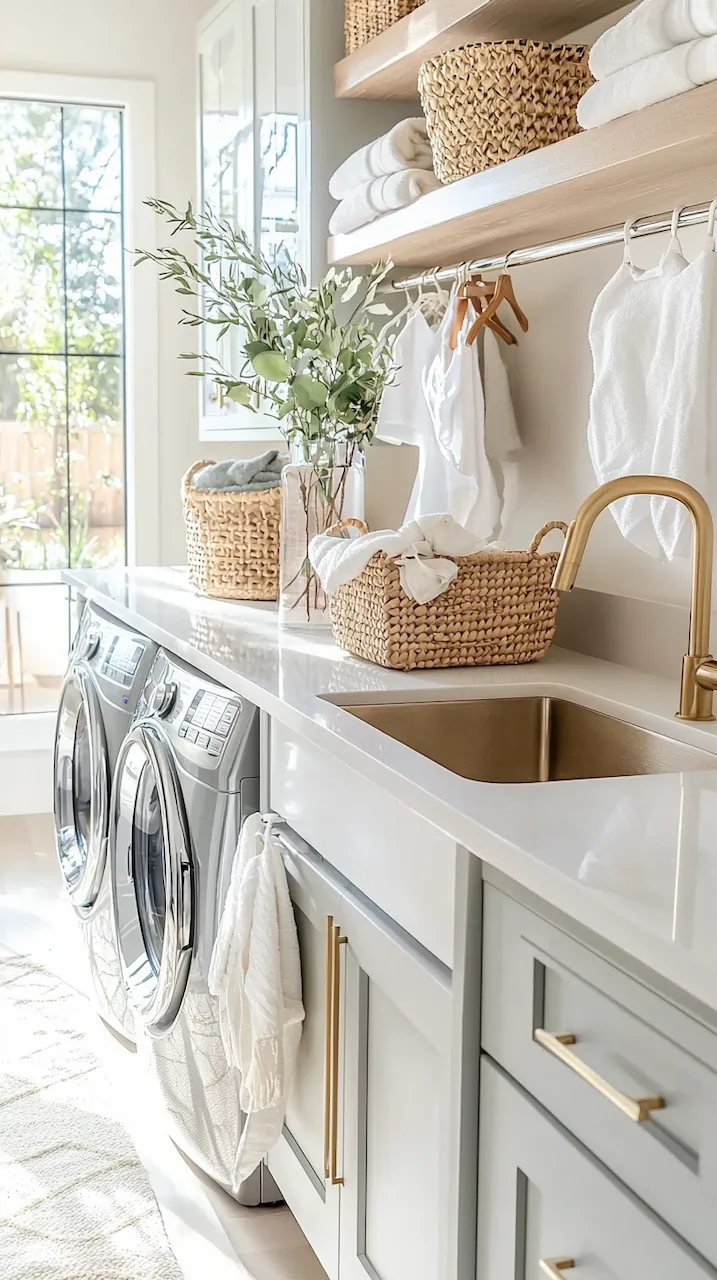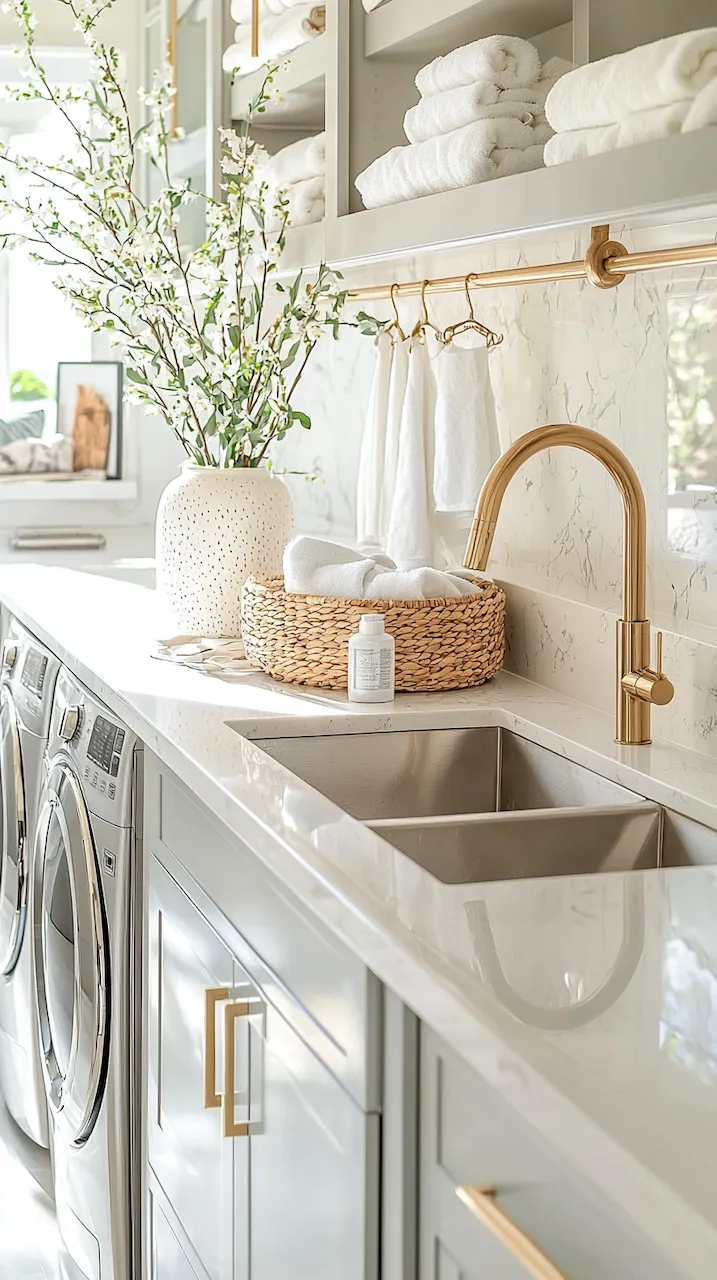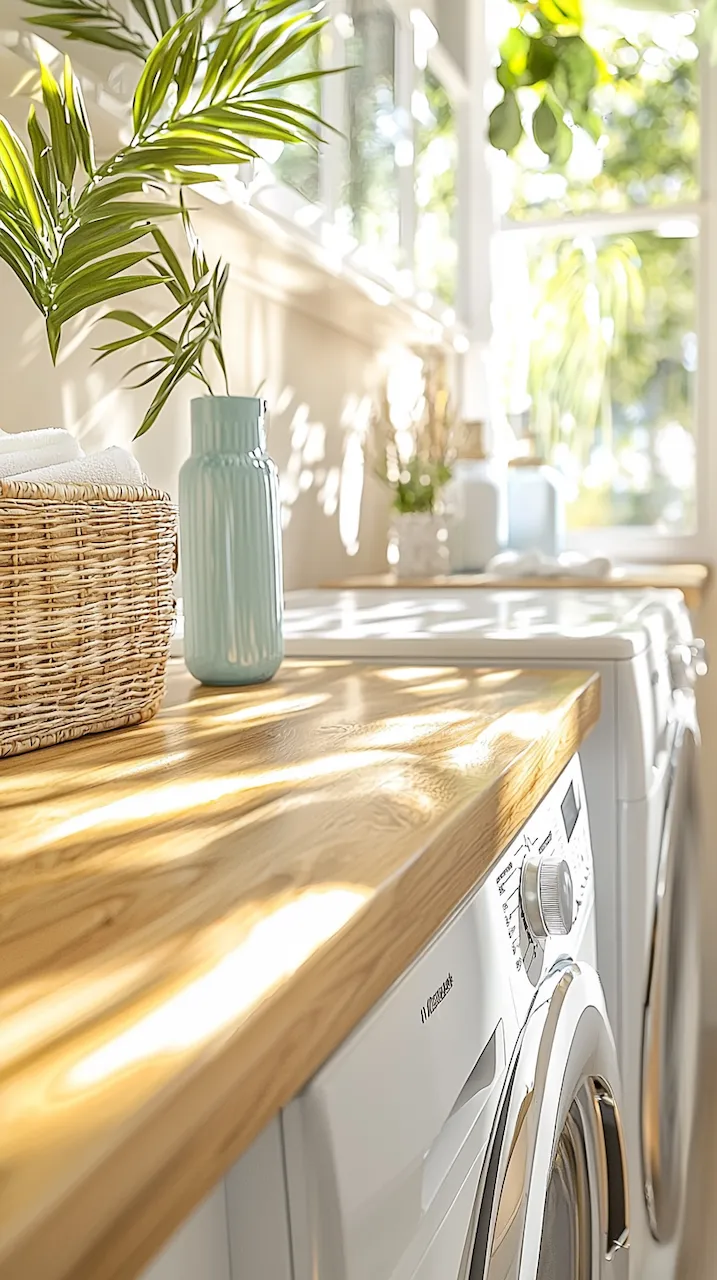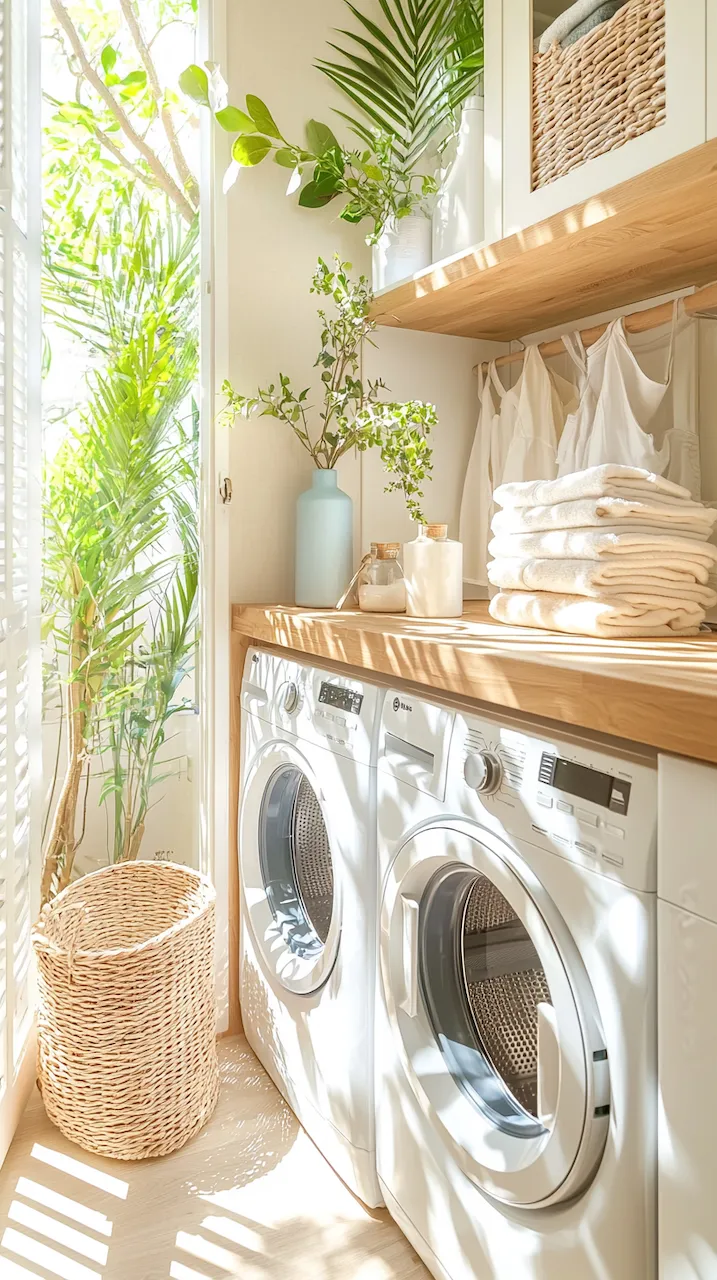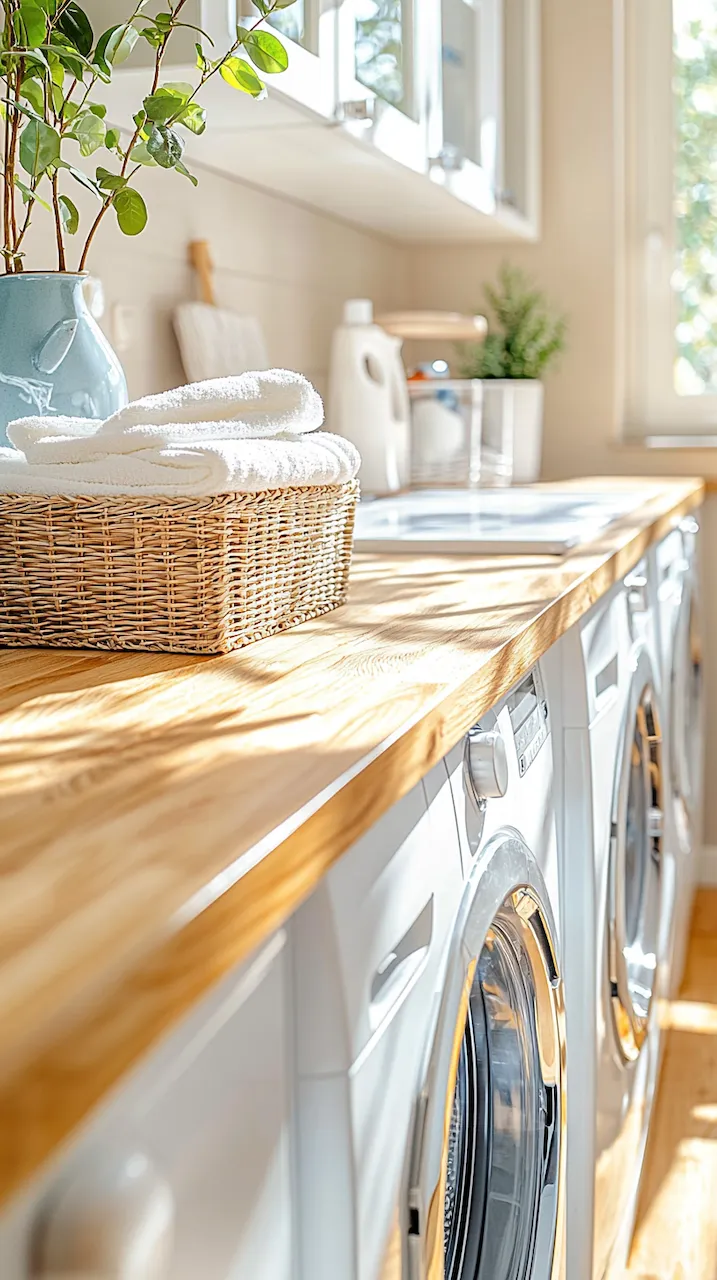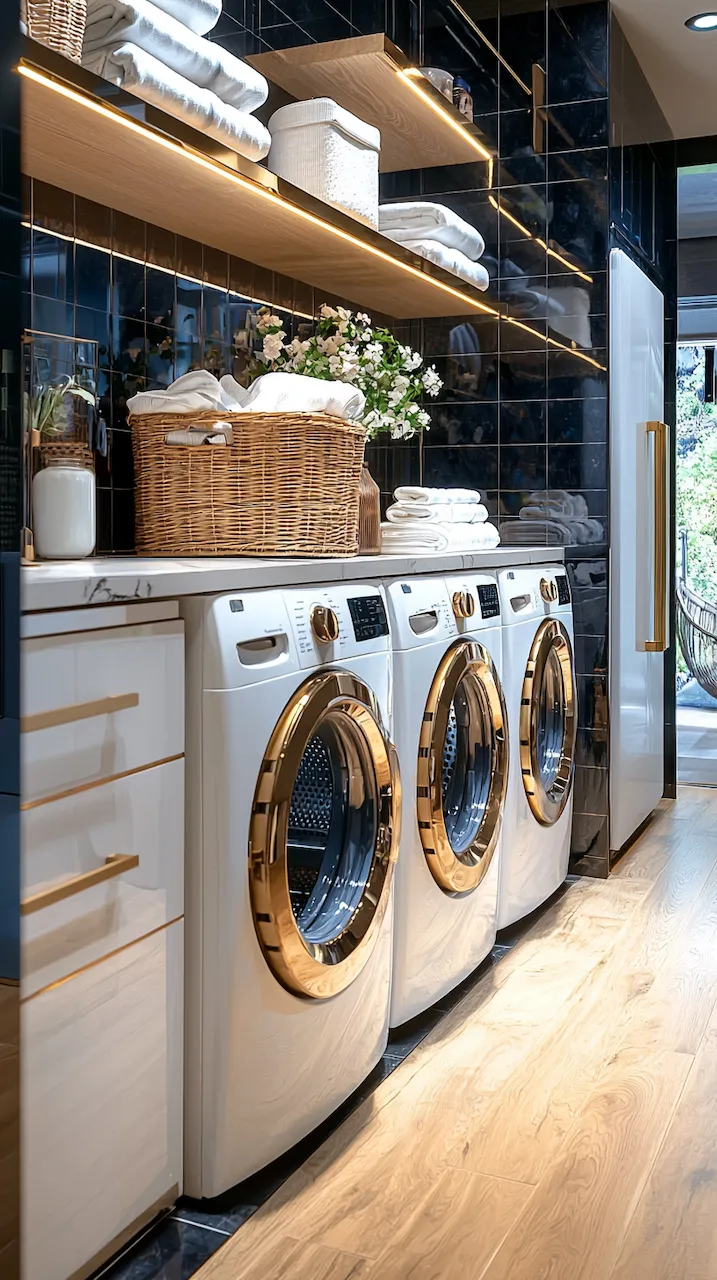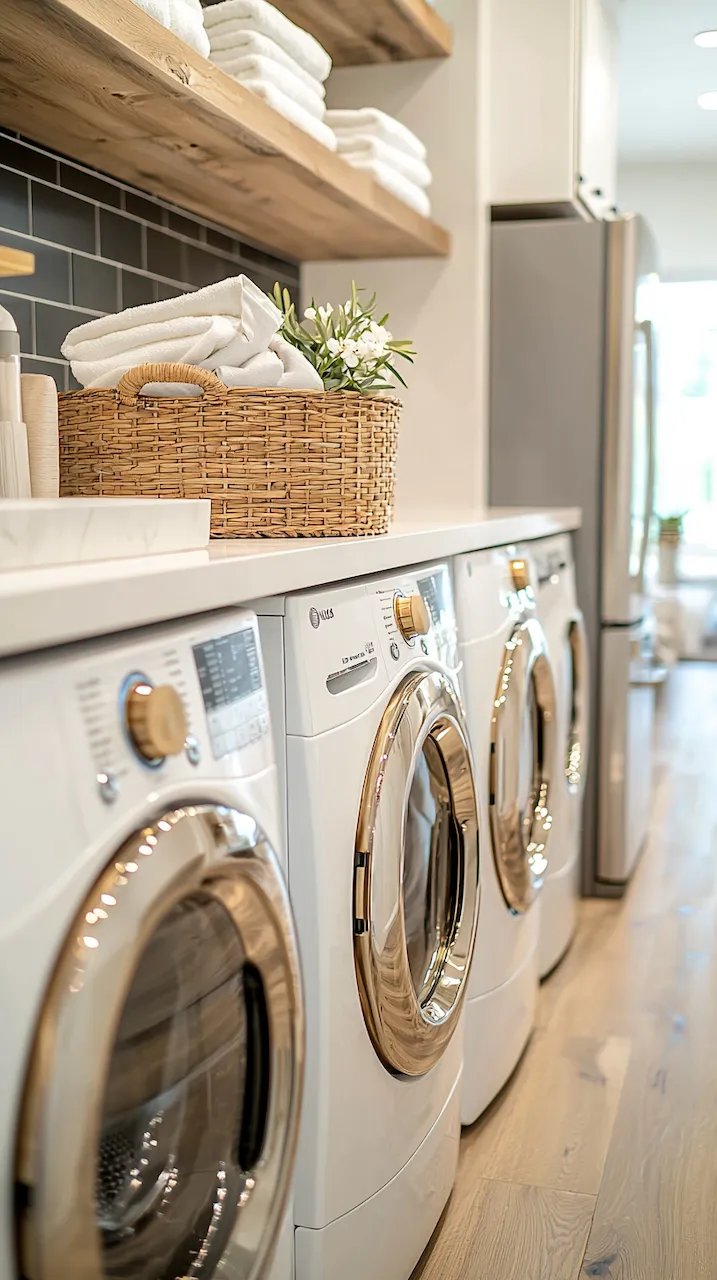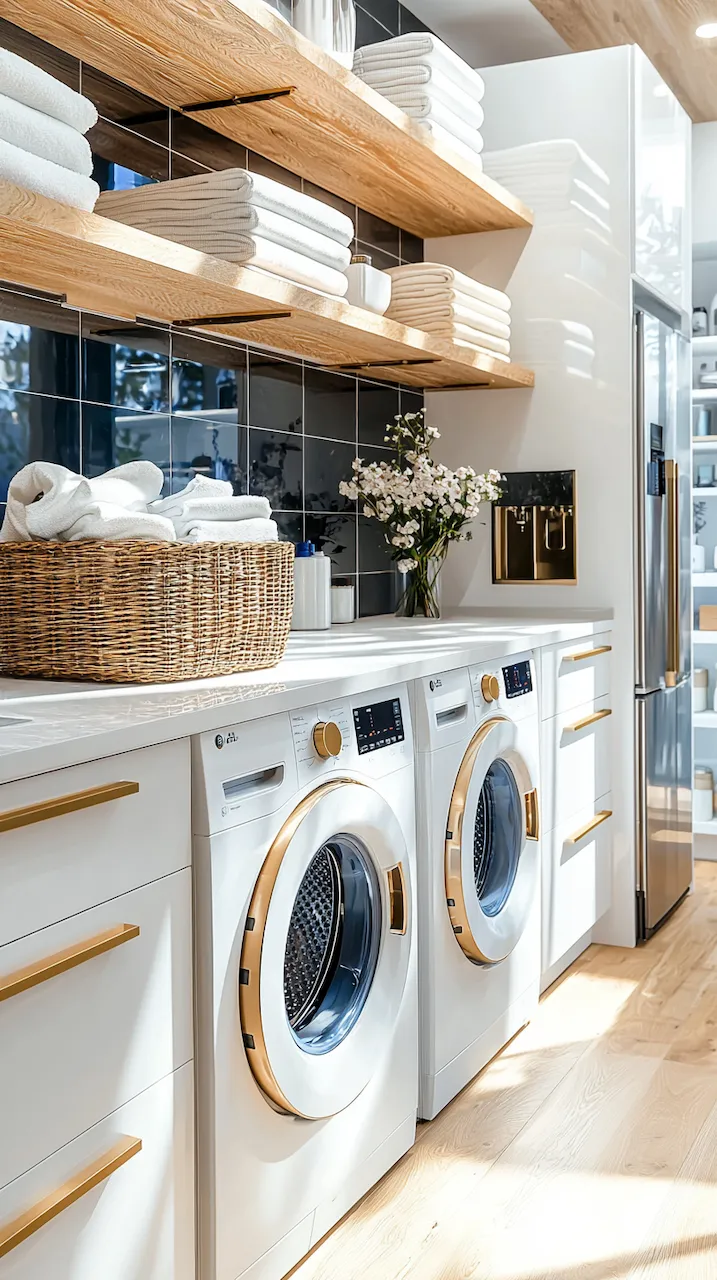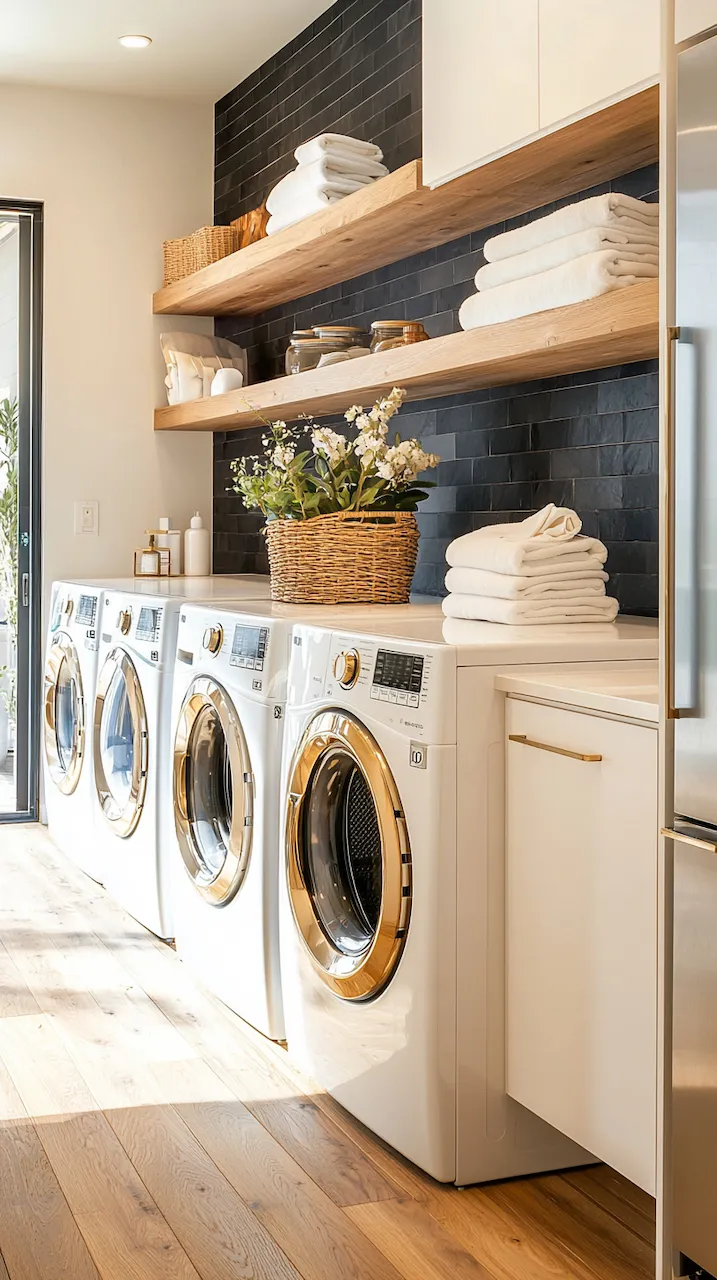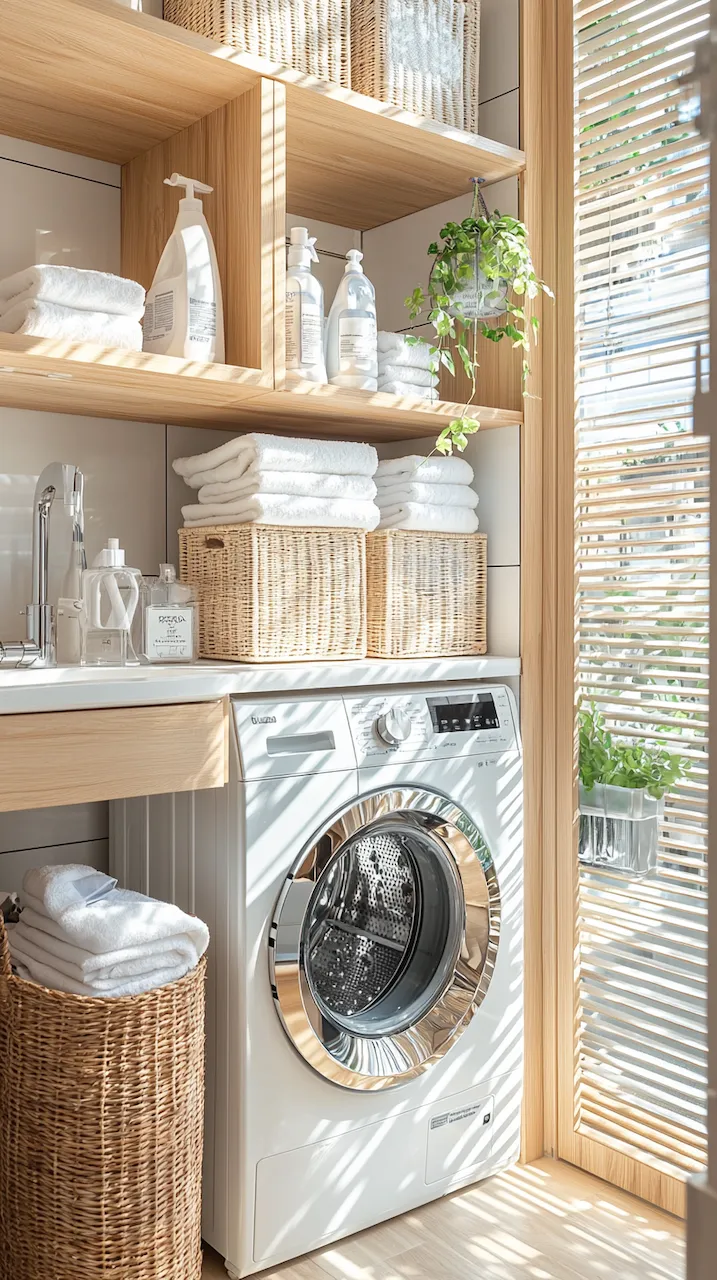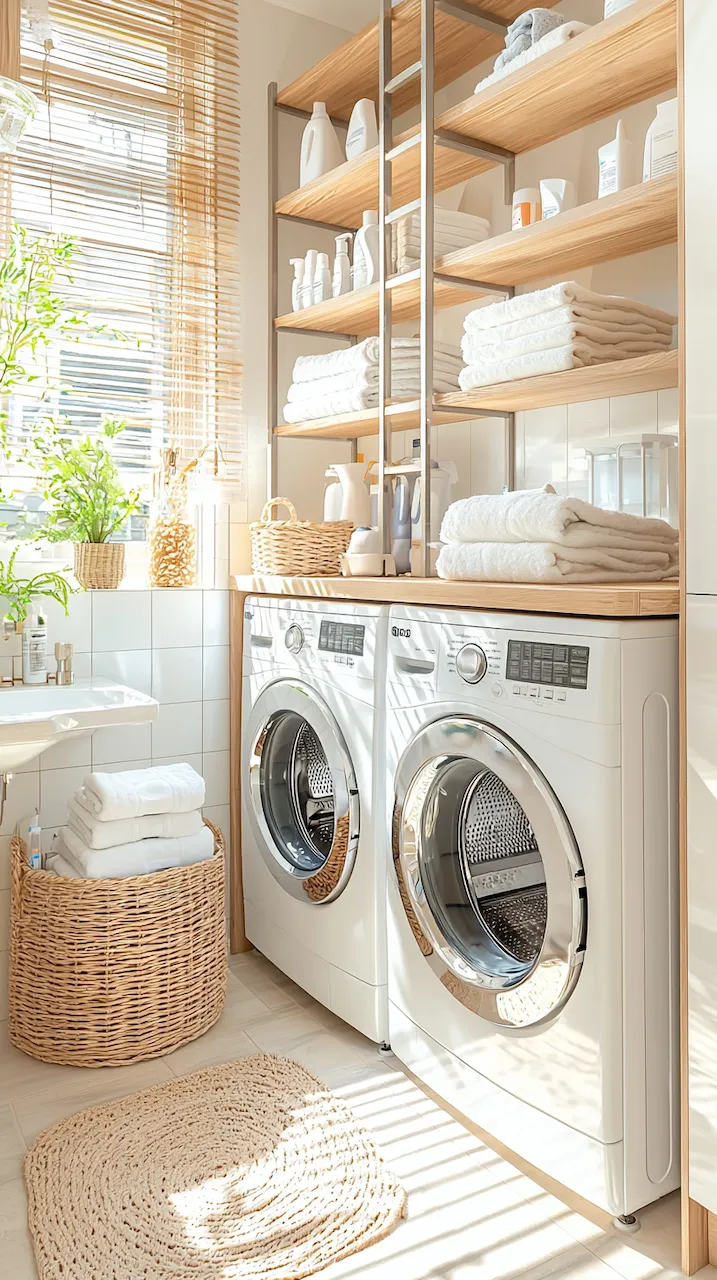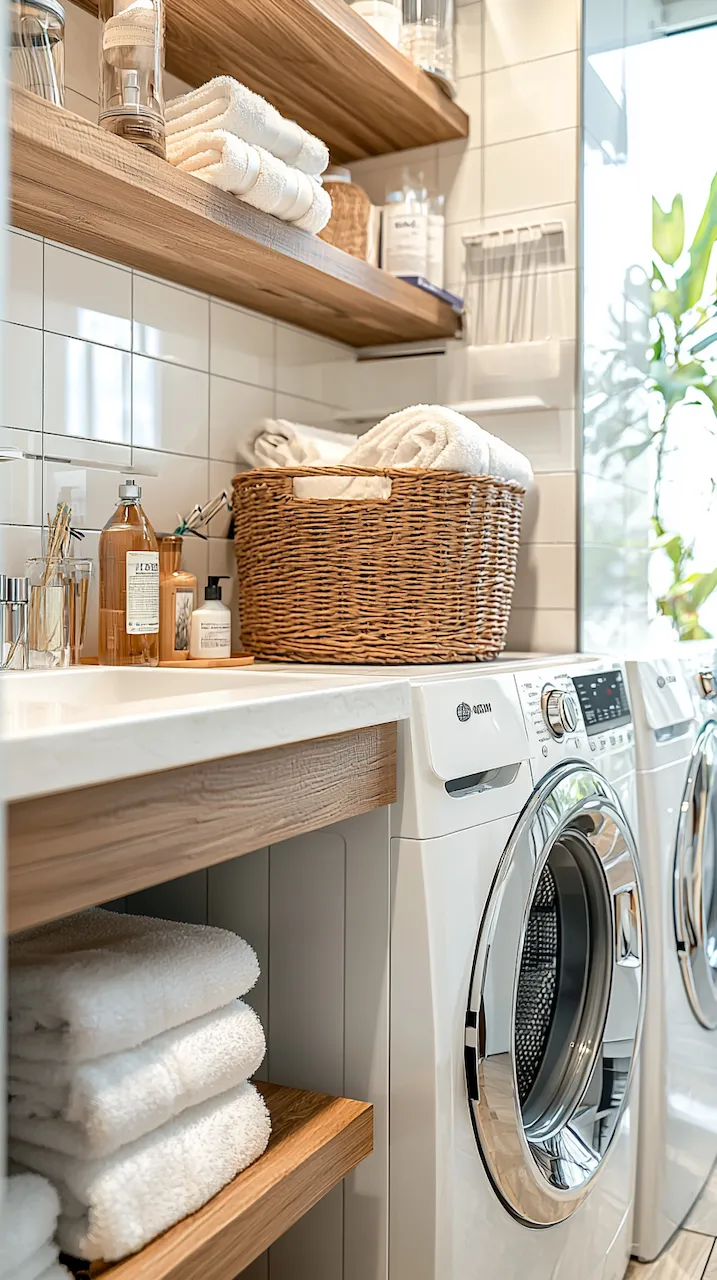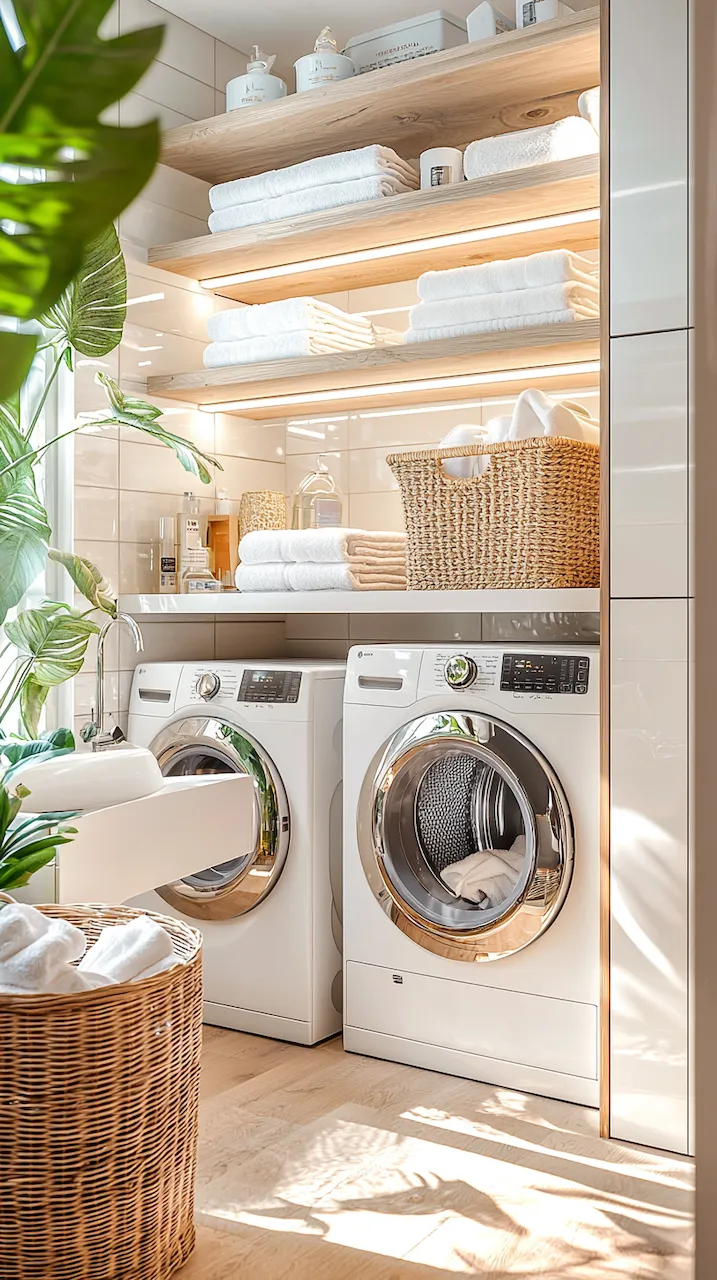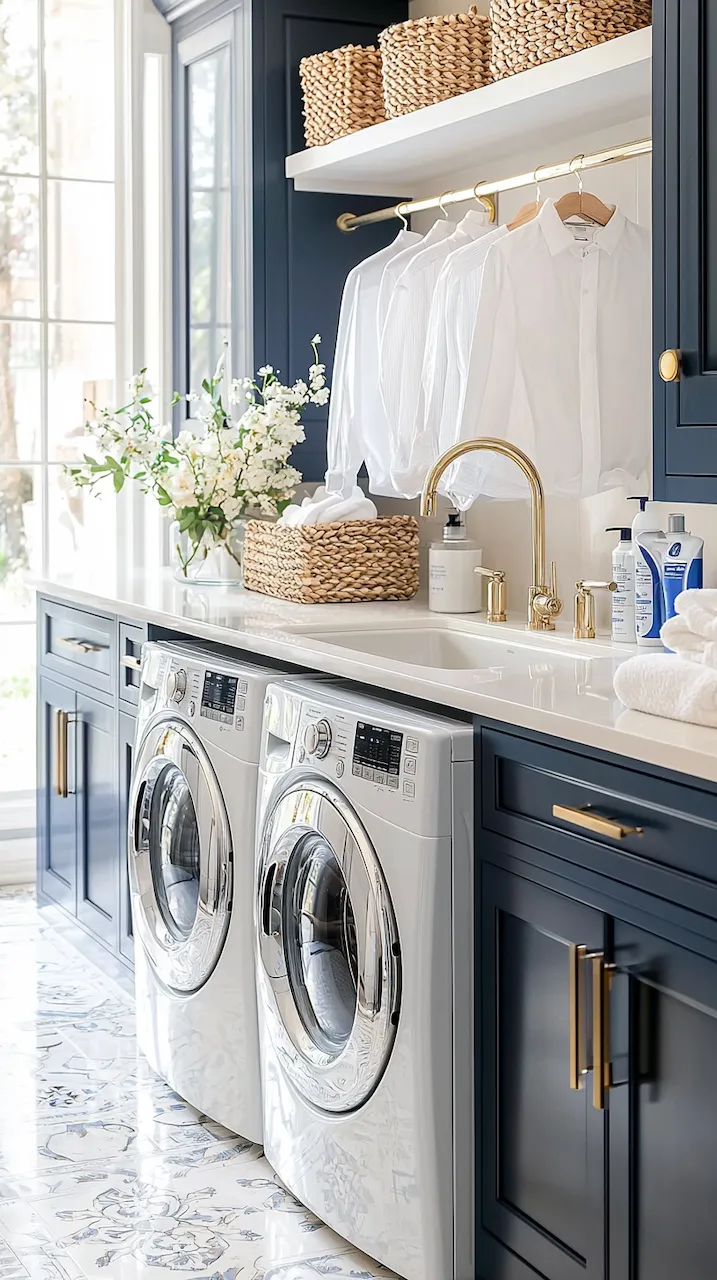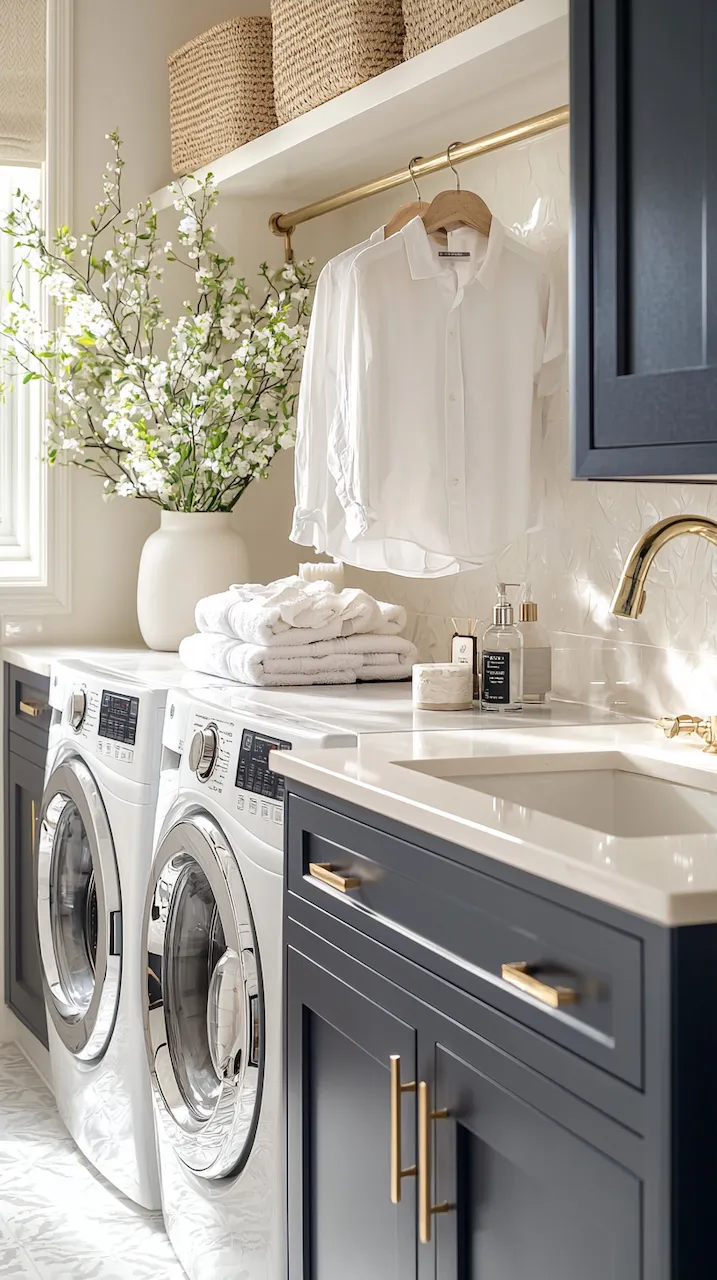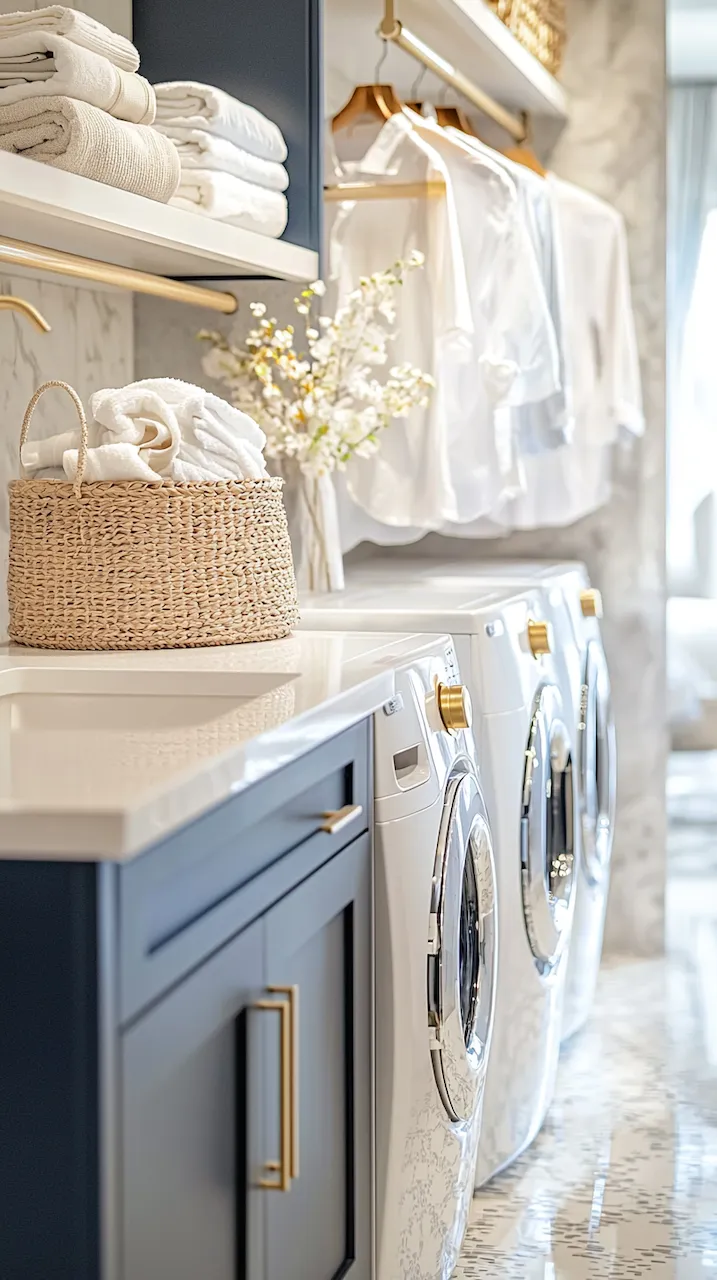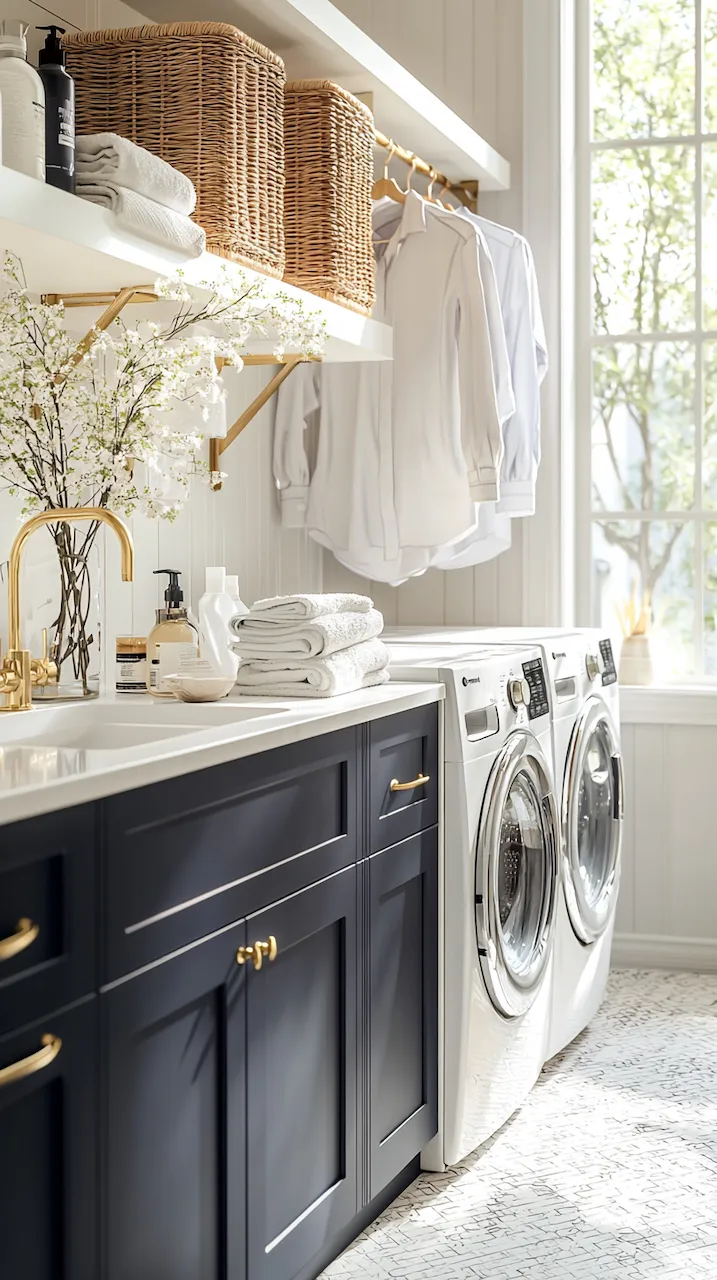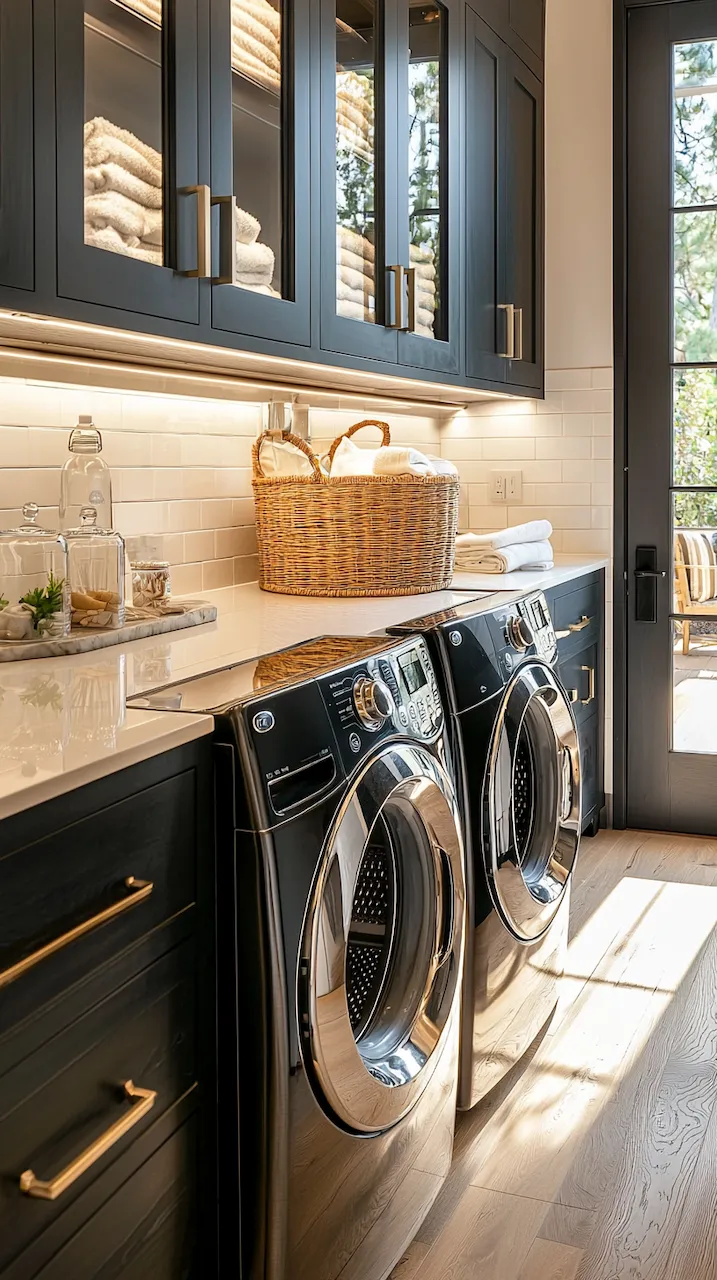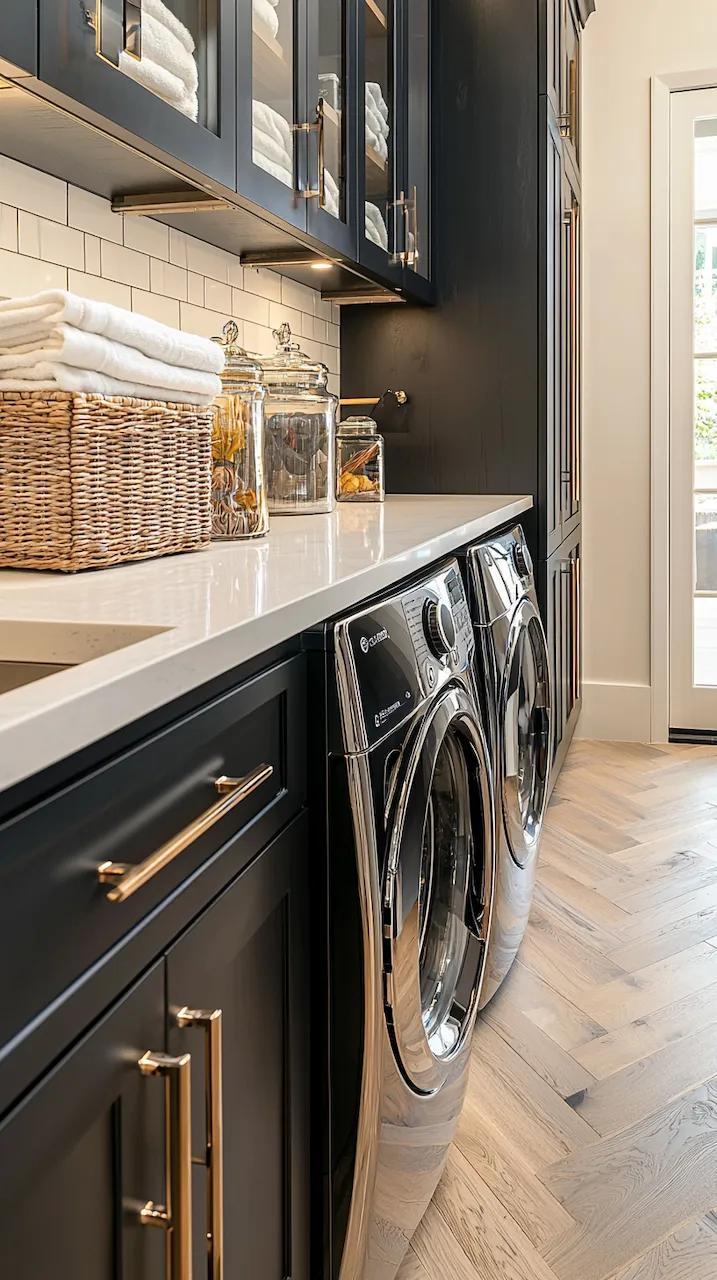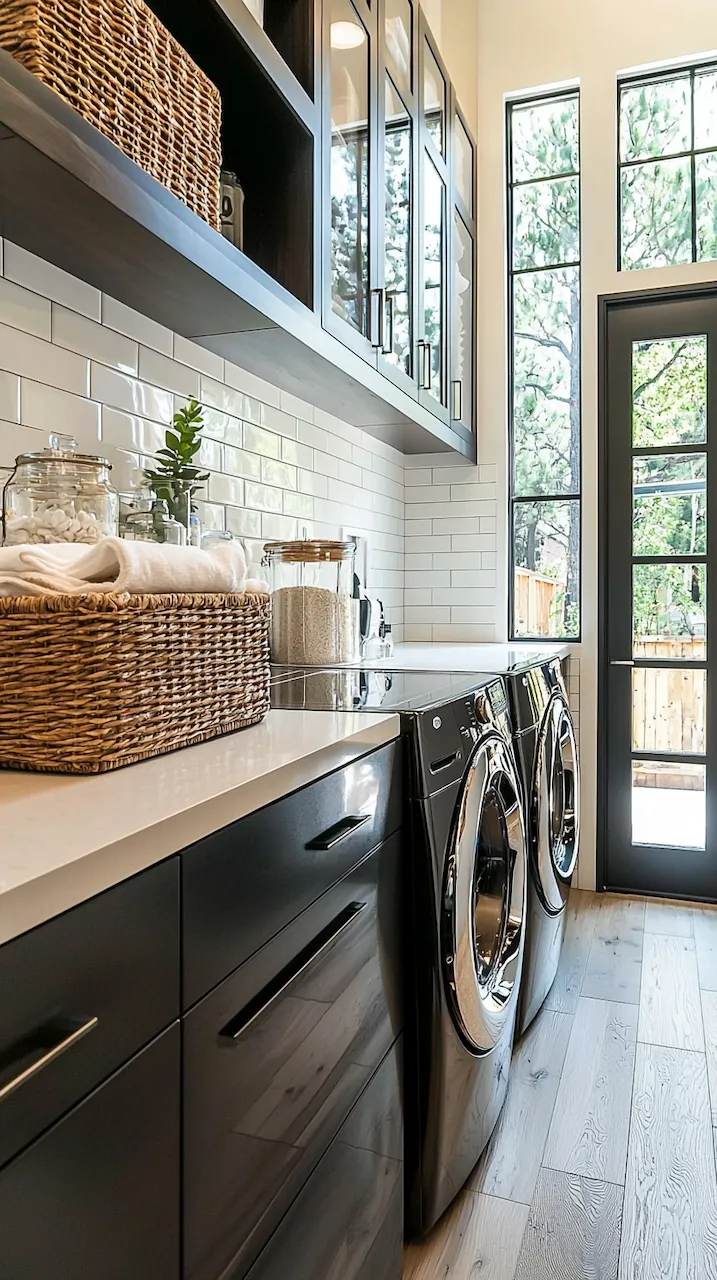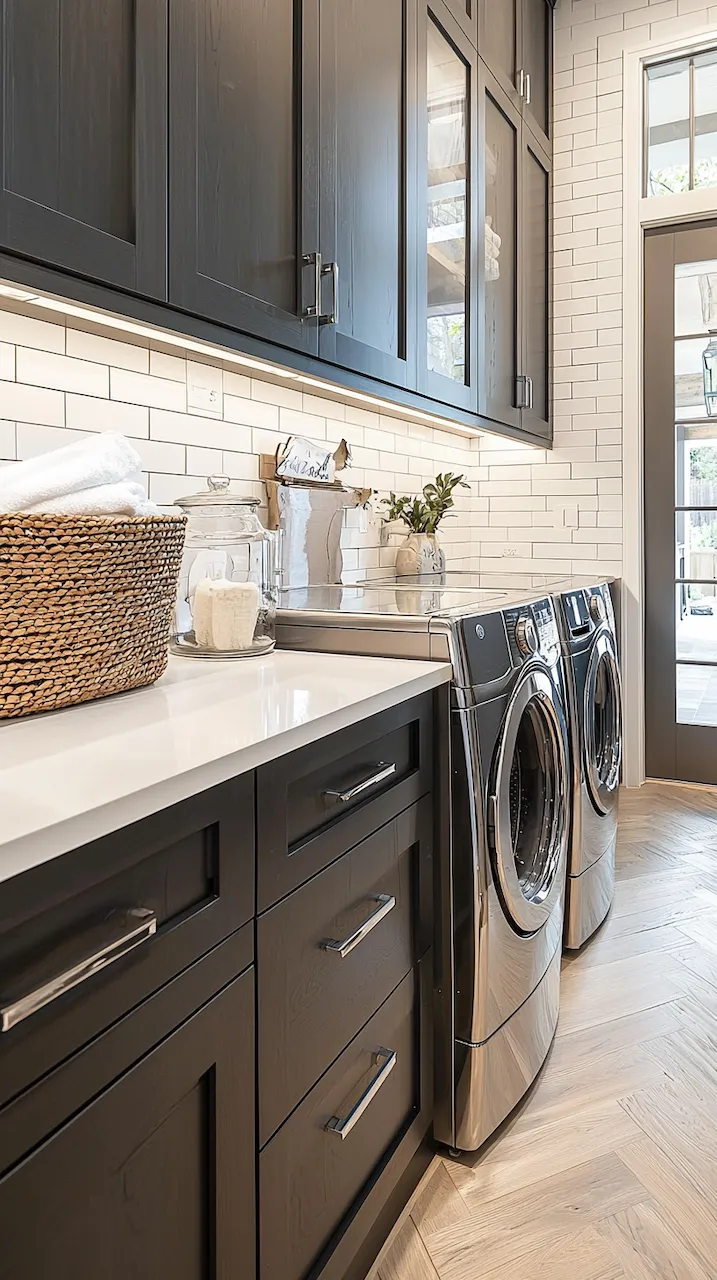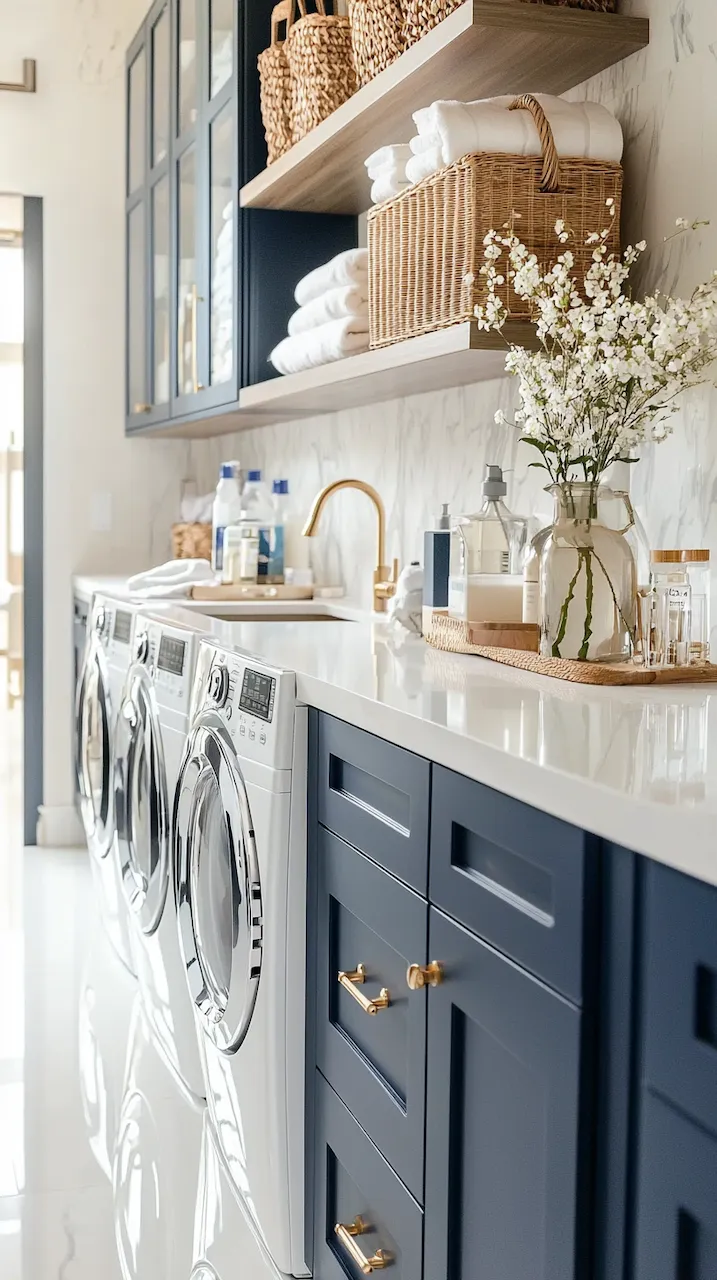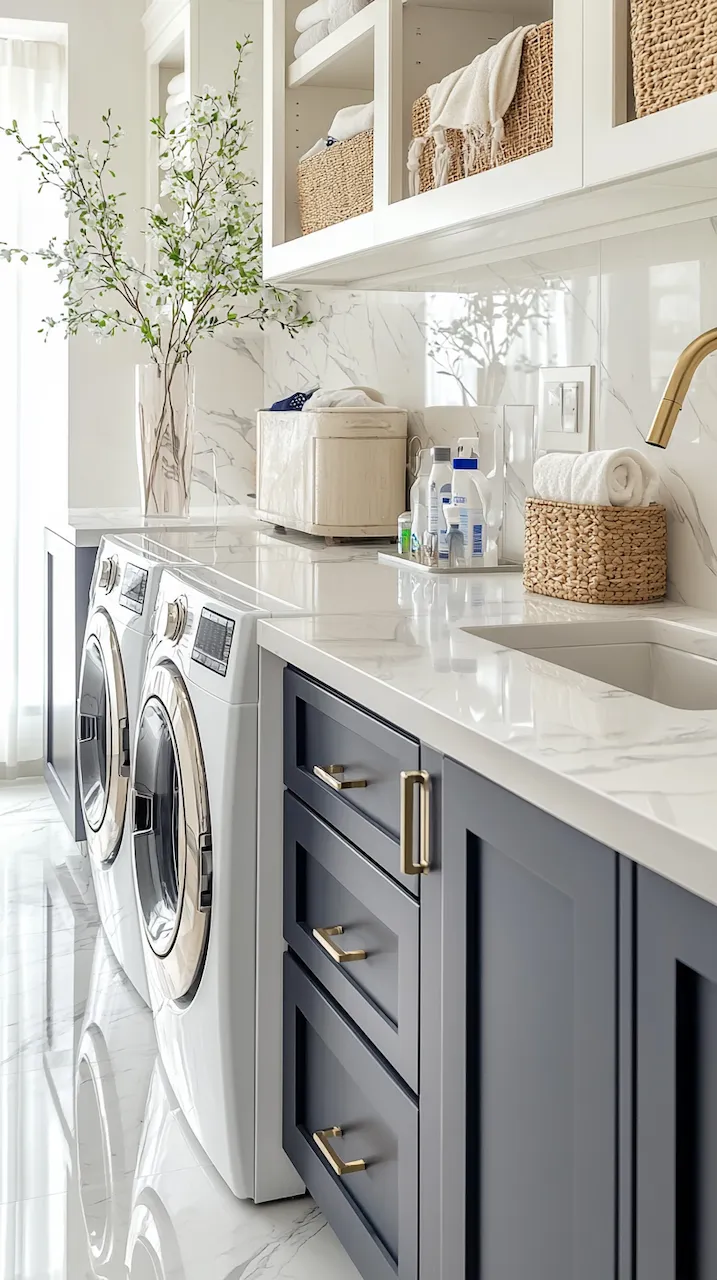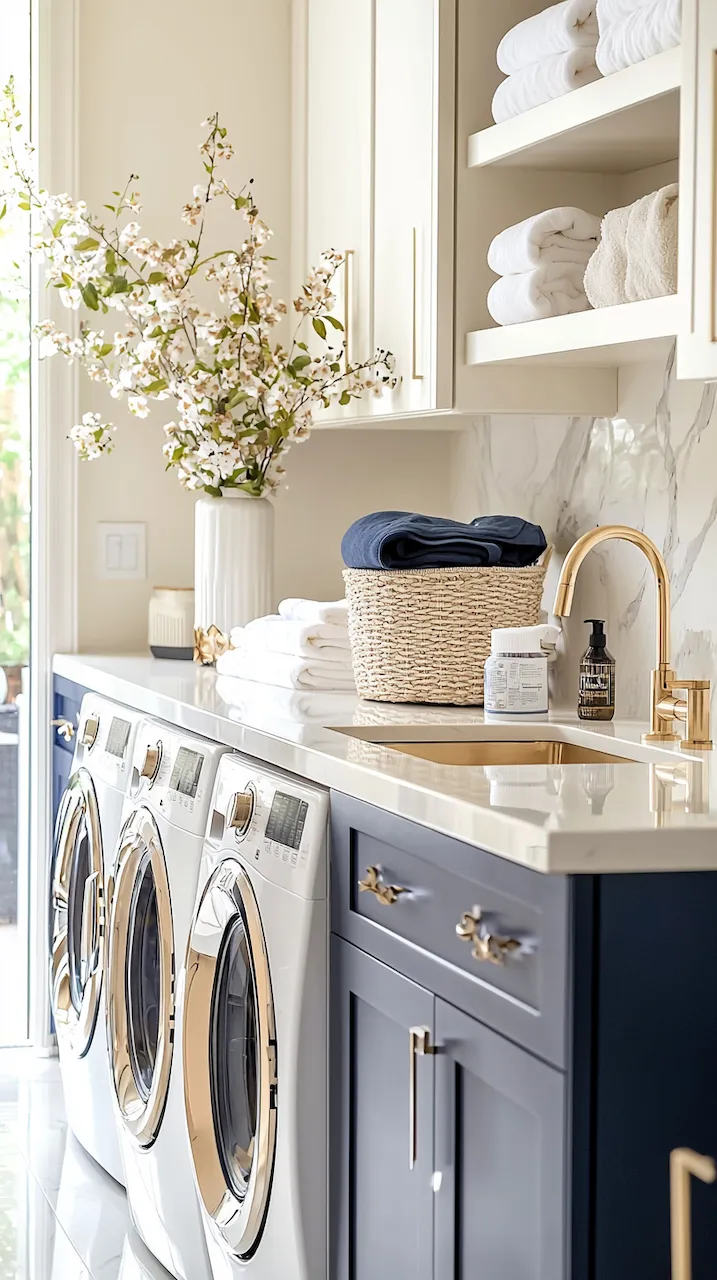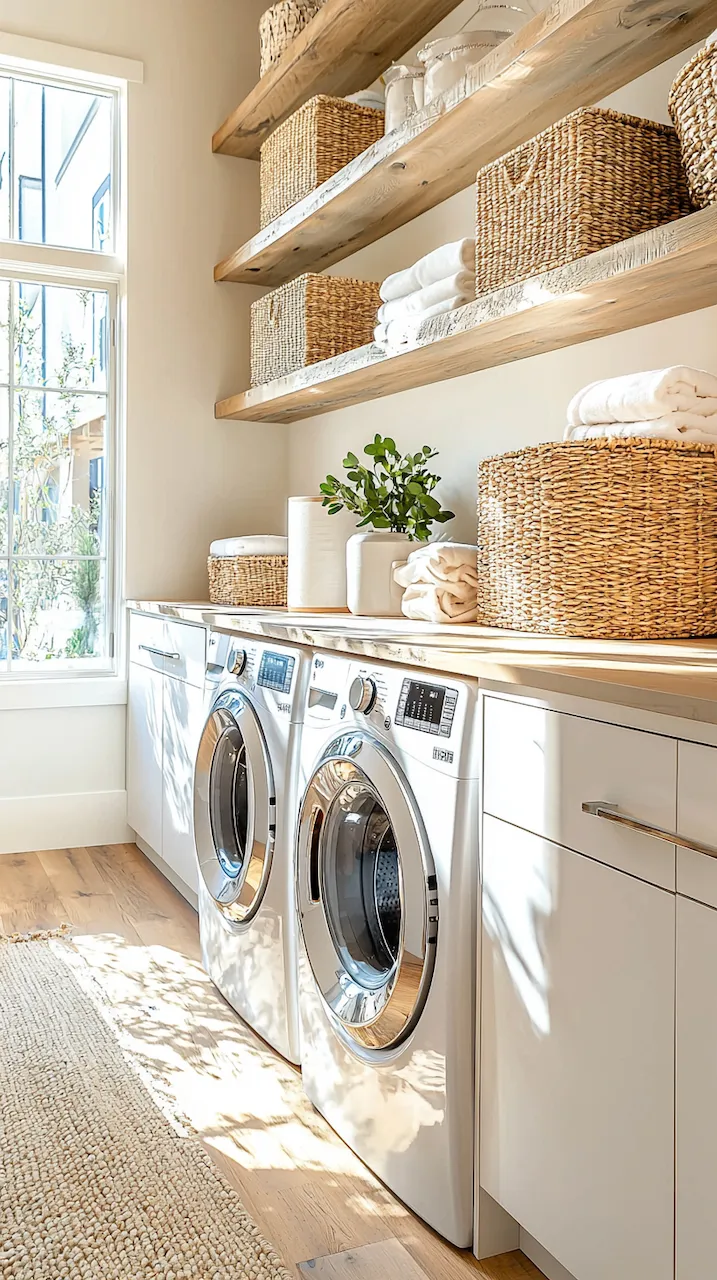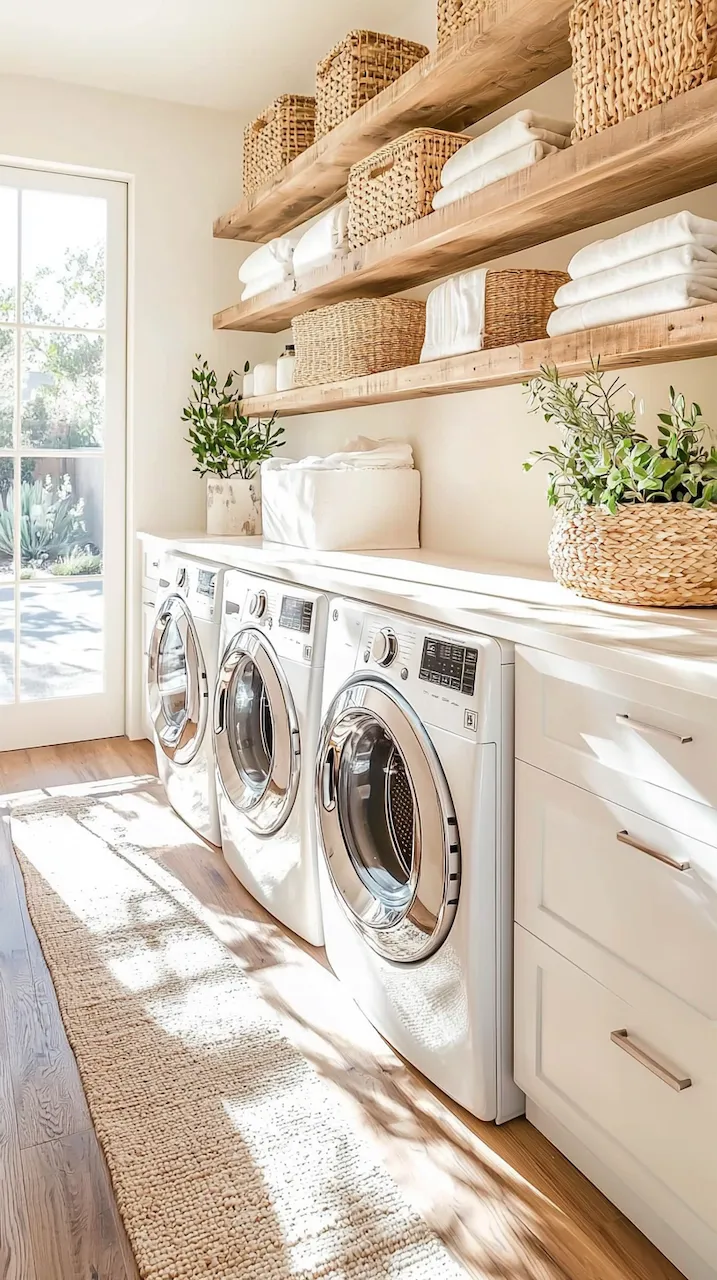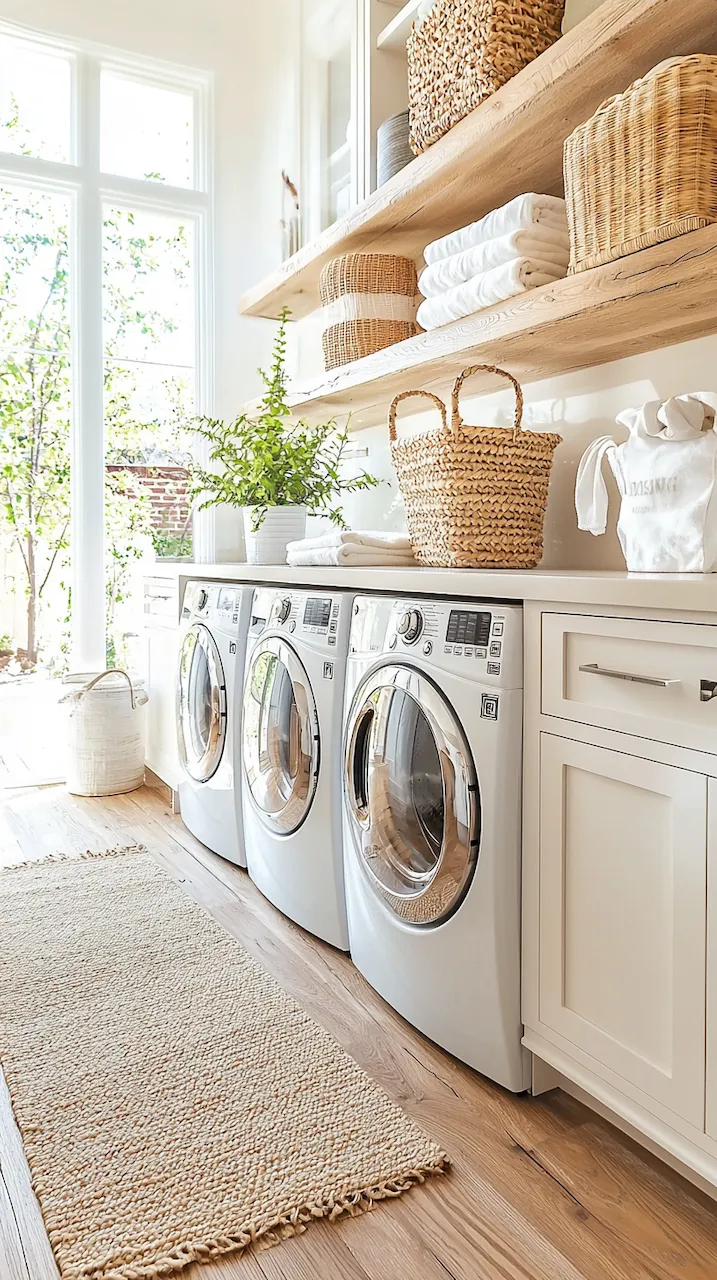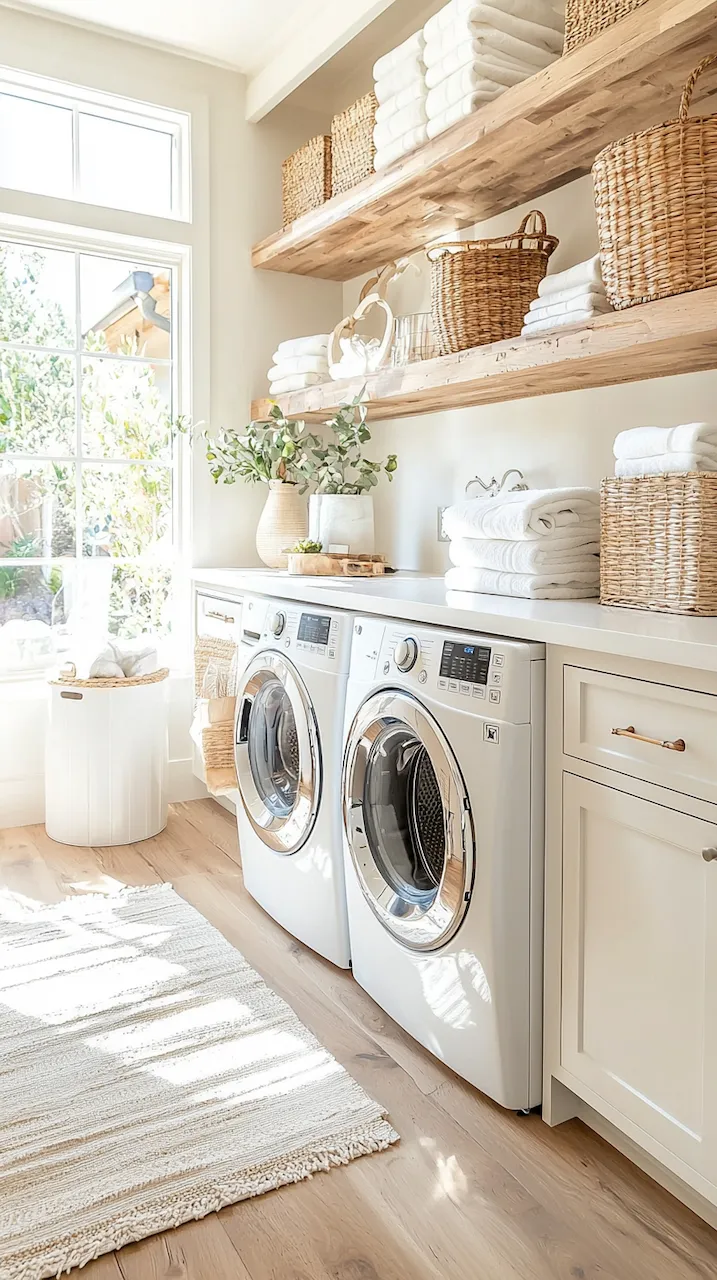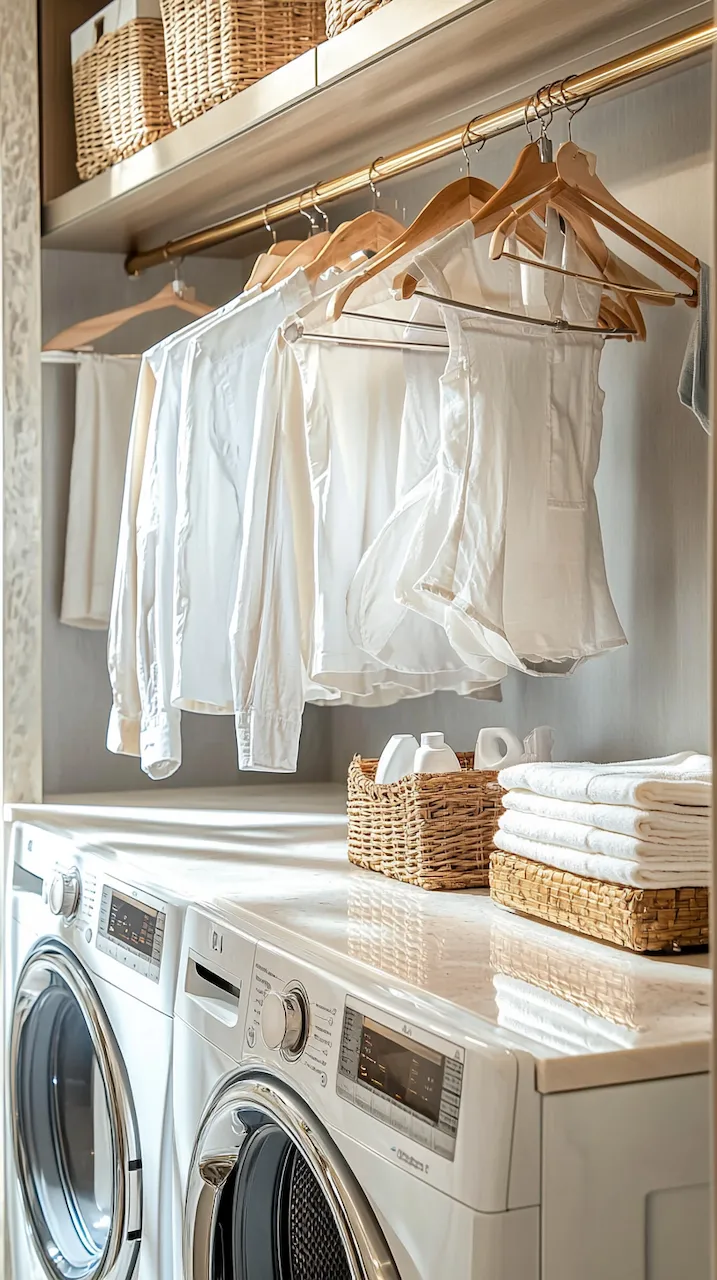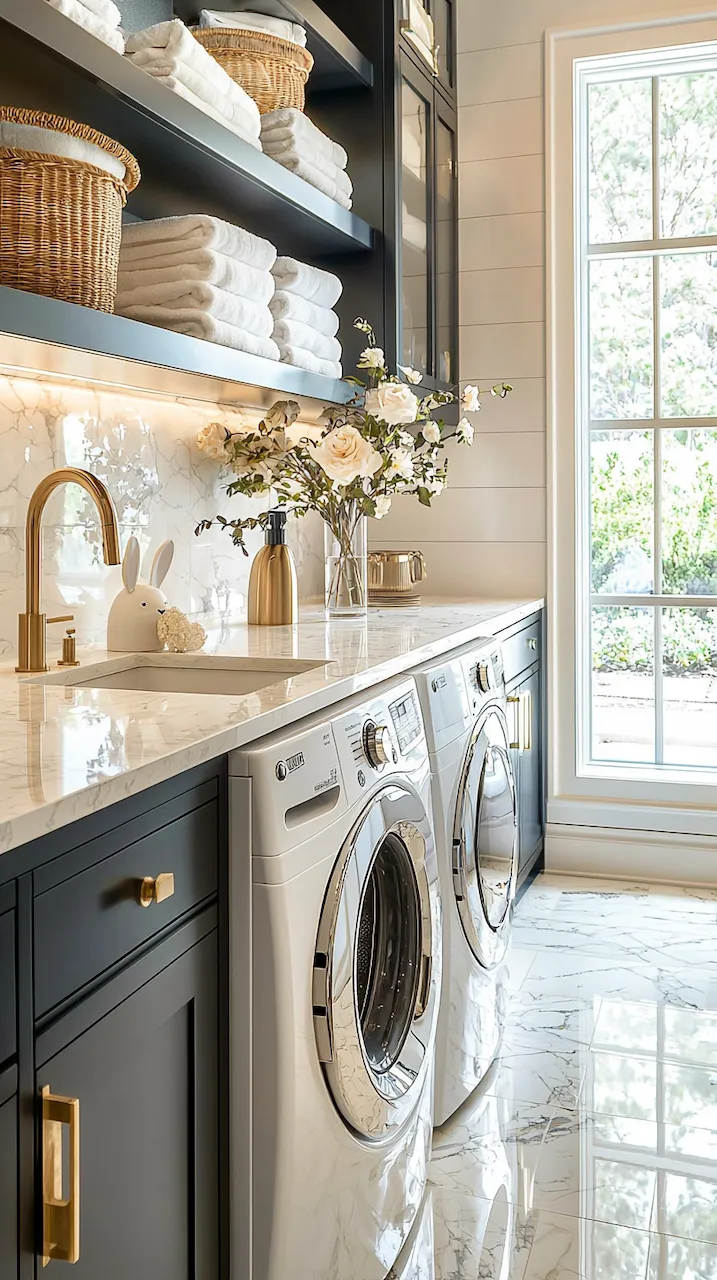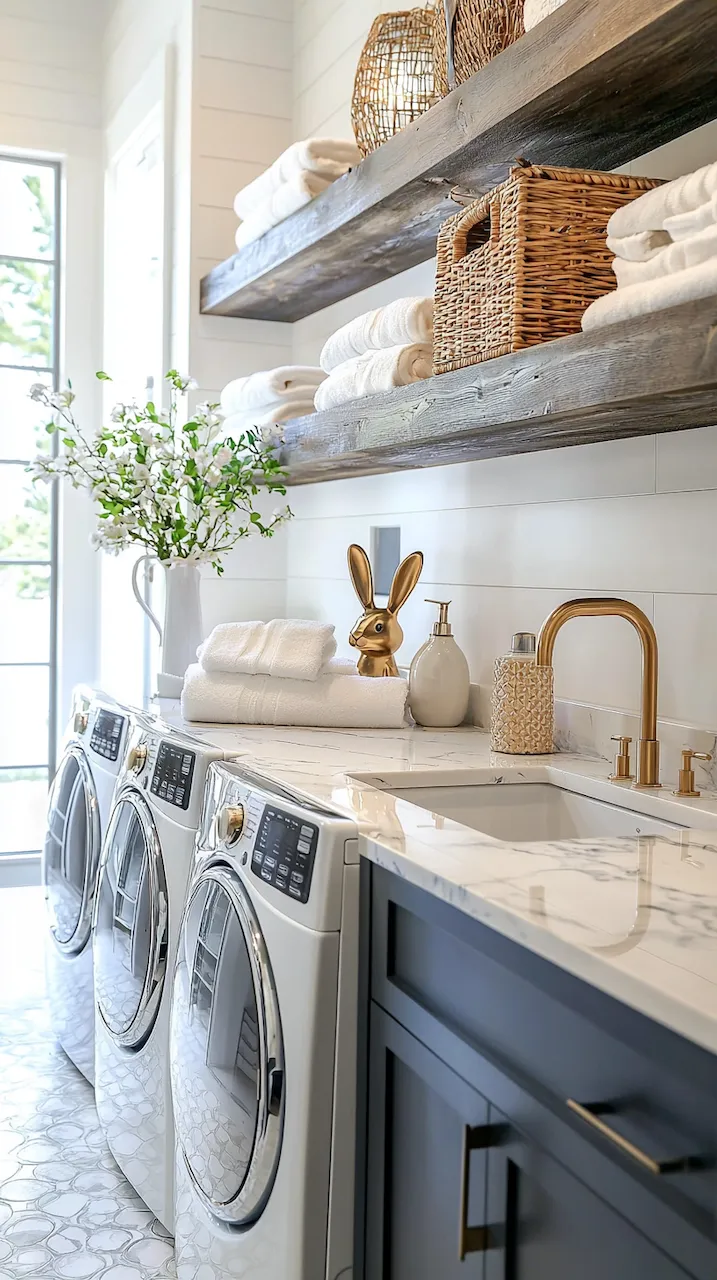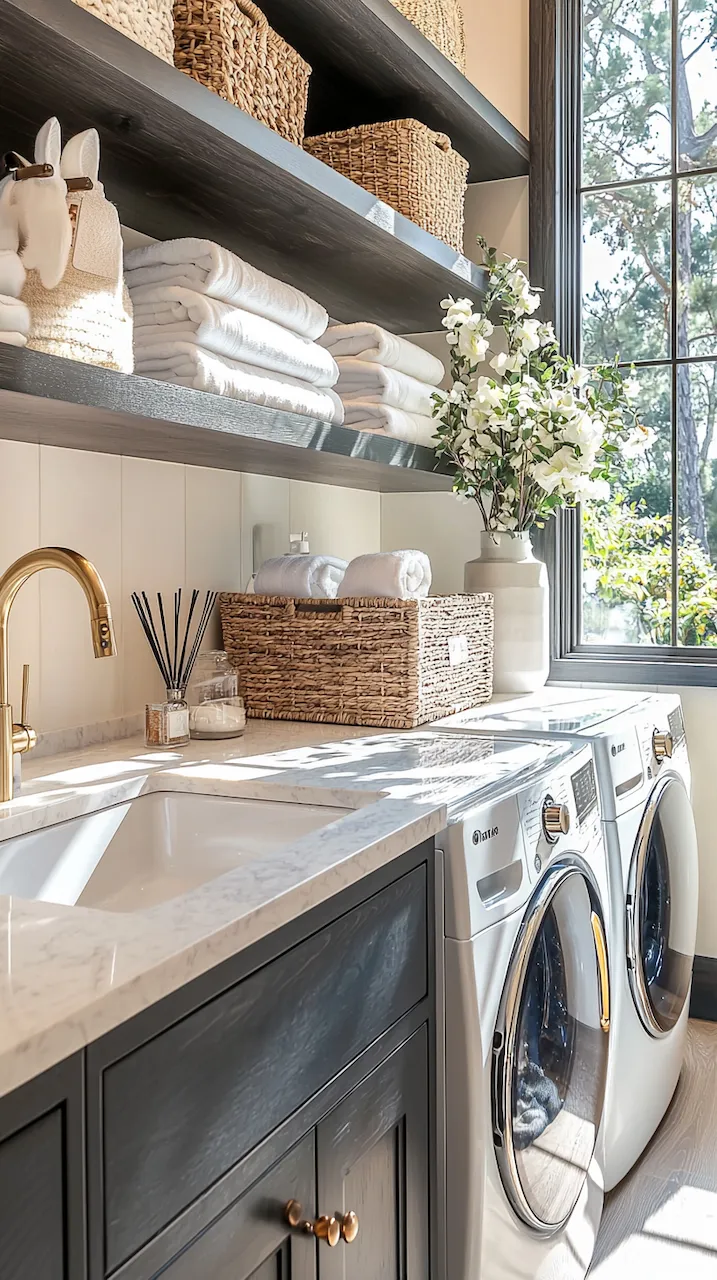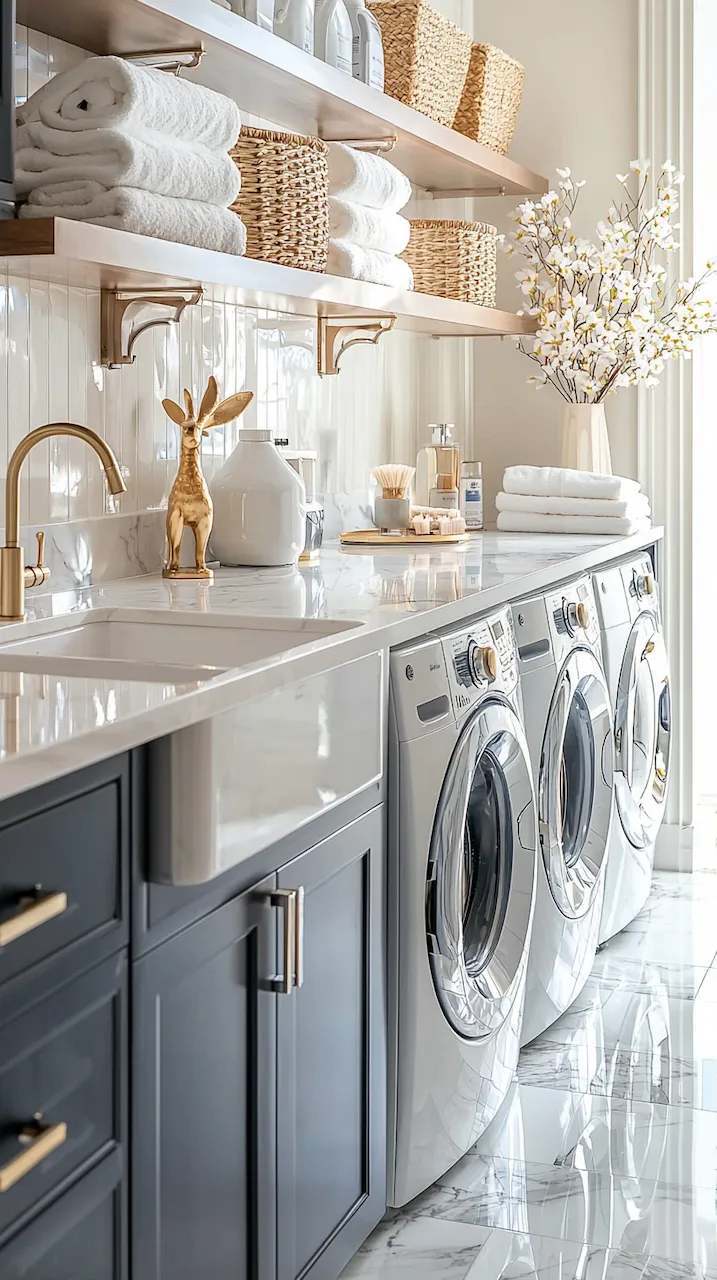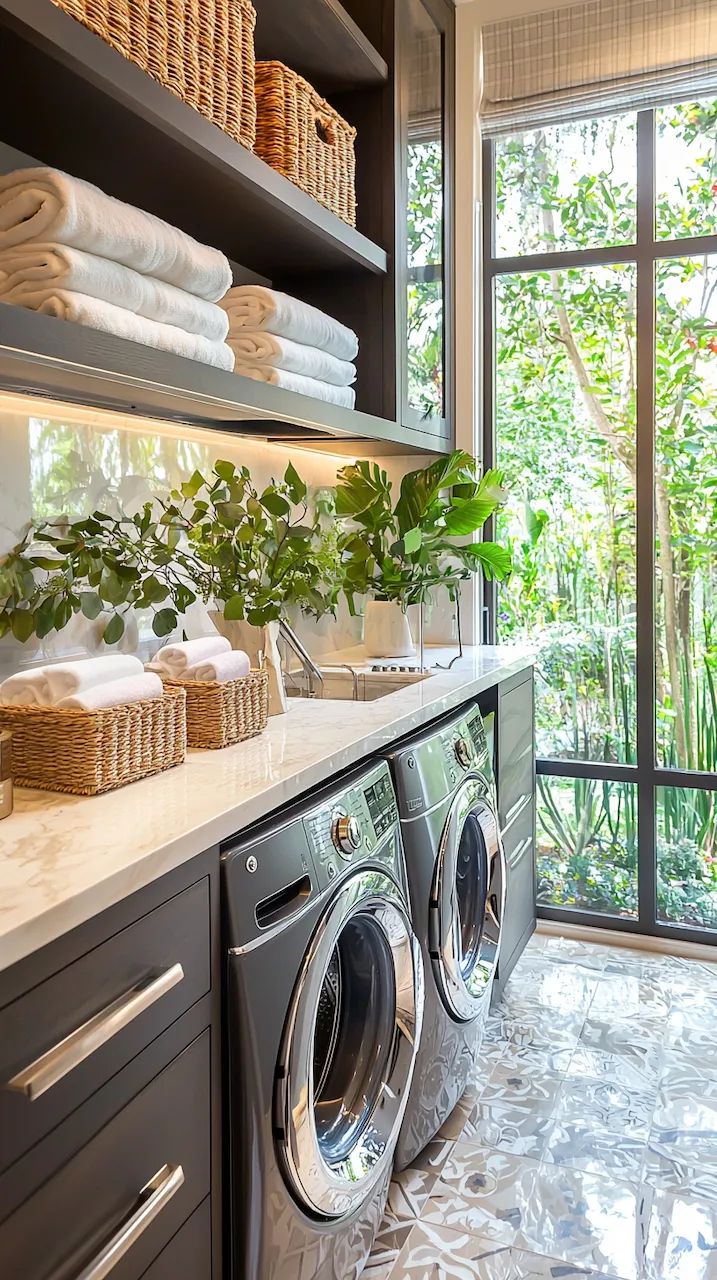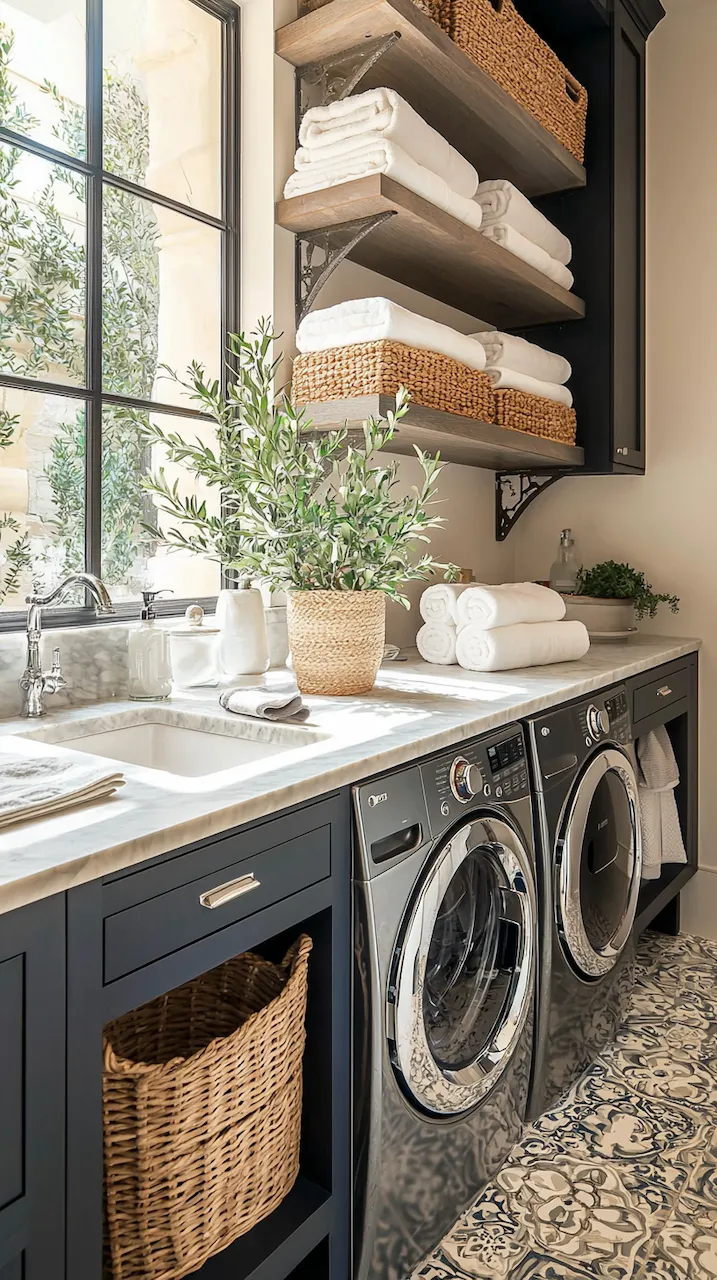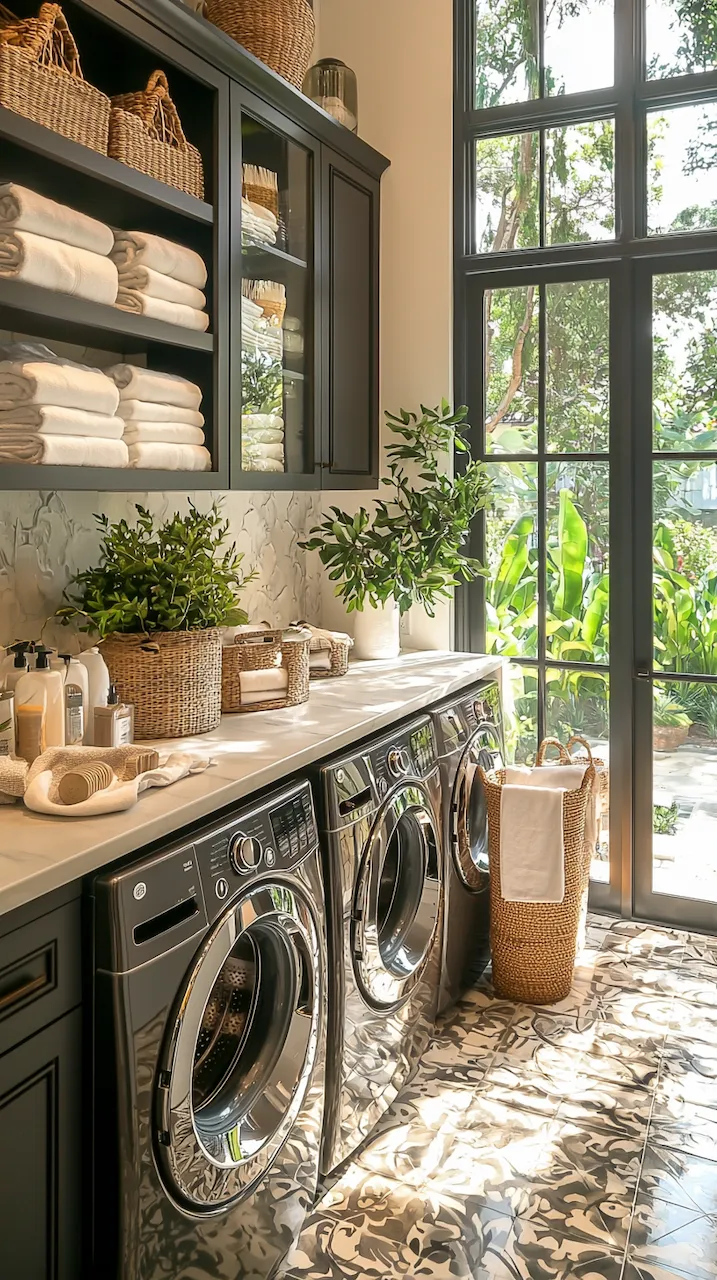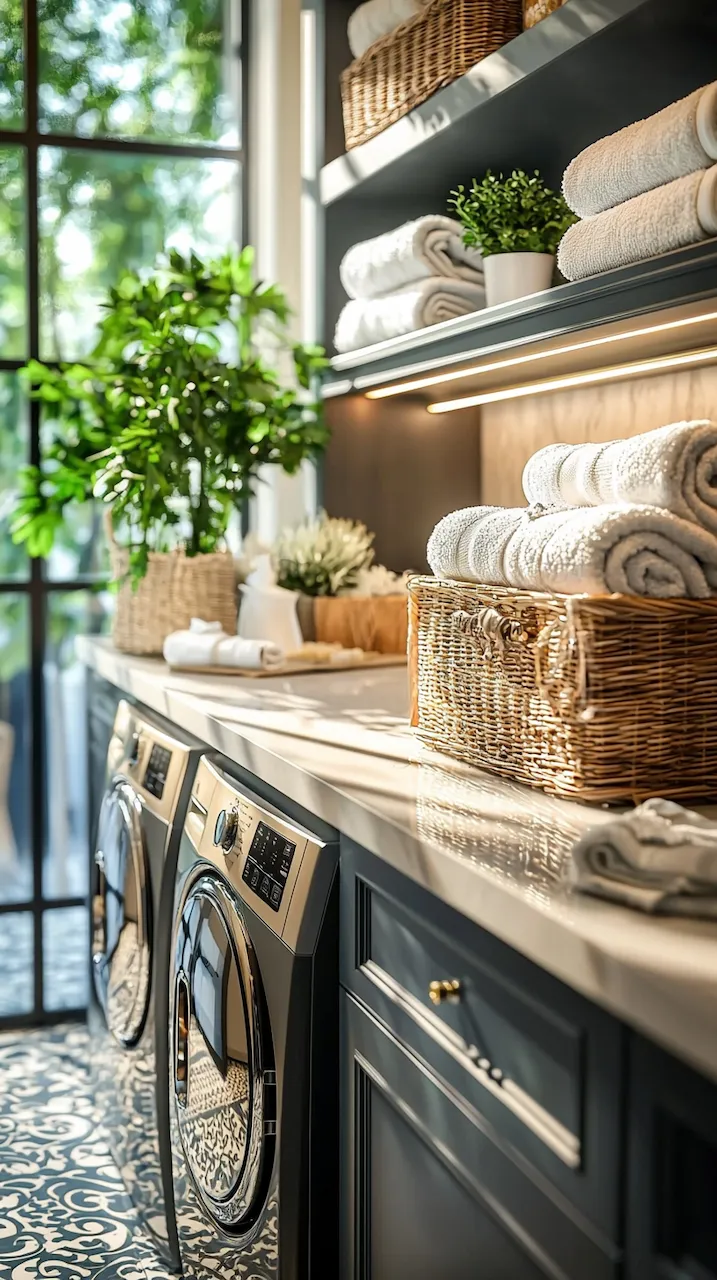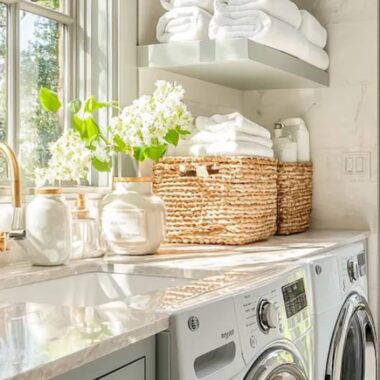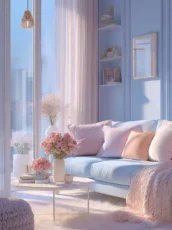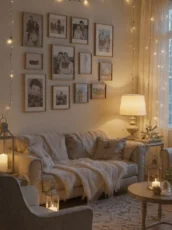There is a hush in every home — a pocket of space that does not clamor for attention but waits quietly, like the pause between thoughts. These are the spaces we often overlook: the laundry room, the tucked-away alcove, the corner lit only by morning light through sheer linen. And yet, in their stillness, they hold something sacred. The memory of hands folding warm cotton. The scent of lavender. The rhythm of water echoing softly against tile. In such spaces, we find a strange sort of sanctuary — not in grandeur, but in grace.
Soft Light and Solitude
Light in a small laundry room need not be harsh or sterile. Let it fall like a whisper.
Choose frosted sconces or a dappled glass pendant that scatters light in painterly shapes. A filament bulb tucked behind a milky globe can turn a routine task into a quiet ritual. Let natural light filter through a gauzy curtain, diffusing the day into shades of dove grey and sage. This isn’t just utility — it’s atmosphere. It’s the feeling of a morning uninterrupted.
In these soft hues and diffused beams, we are reminded that solitude doesn’t mean emptiness. It is a space cleared of chatter, made for inwardness. A folding counter becomes a place for reflection. A small stool in the corner invites stillness, not just rest.
Furniture With Memory
In small rooms, each piece must carry its weight — and its story.
Opt for aged wood counters that show their grain like rings of a tree. Let shelves be open, but sparing. A simple ladder rack fashioned from reclaimed barnwood leans gently against the wall, holding linen tea towels like old letters.
Think of your laundry room as a canvas for functional nostalgia. Perhaps a vintage enamel basin holds clothespins. Or a wicker hamper reminds you of your grandmother’s hands, deft and kind.
Furniture doesn’t need to shout to have presence. Let it be worn, warm, and quiet — the kind of quiet that hums with lived life.
Textures That Breathe
Even the smallest space can feel expansive when it breathes.
Layer textures that invite touch: a cotton rug underfoot, handwoven and slightly uneven. A clay jar holding lavender sprigs. Cabinets painted in muted blush or soft taupe, their matte surfaces calming the eye.
Metal fixtures — brushed brass or soft iron — age over time, collecting patina like wisdom. Tile, in a herringbone pattern or weathered stone, adds rhythm underfoot. Let each material remind you of something real, something natural, something human.
In these tactile details, we invite not just beauty, but a kind of groundedness. The room begins to feel like a whispered poem: not loud, but lasting.
The Scent of Stillness
A small laundry room can be a symphony of quiet scents.
Let essential oils rest in a ceramic dish on a narrow shelf — bergamot for clarity, vetiver for calm. Let fresh sheets carry the trace of cedar or rosemary. Even a bar of handmade soap, left out to dry, becomes a small sculpture of scent.
Scent roots us. It brings us back — not to chaos, but to calm. In the gentle ritual of drying clothes or pressing linen, you return to yourself. You remember that fragrance, like memory, floats best in the quiet.
Nooks for Thought, Corners for Breath
Even in a tiny room, you can make space for pause.
A writing nook may be no more than a narrow shelf beneath a window — a journal beside a teacup. A curtain drawn halfway across a utility space becomes a mental divider, a breath between tasks. A single chair beside a wall-mounted lamp becomes a place not just to wait, but to be.
Consider “mental corners” — not architectural spaces, but emotional ones. A dried bouquet in a ceramic jug. A candle that flickers when the washer spins. These are not luxuries, but necessities. They offer brief returns to the self in a world that asks for constant forward motion.
Beauty in the Quiet Details
Designing a home is not about achieving perfection — it is about choosing what matters to you, again and again.
In a small laundry room, that choice might look like a linen curtain instead of plastic bins. A drawer filled with beeswax wraps and clothespins instead of clutter. It might mean leaving a blank space on the wall because blankness, too, is part of beauty.
Let your space reflect your quiet. Let it breathe. Let it feel like you — not a showroom version of you, but the version that exists in early mornings, rainy afternoons, and the golden hour of doing nothing.
Because the smallest rooms often hold the deepest calm. And in these tucked-away corners, you may just find not only a place for your things, but a place for your thoughts, your moods, your meaning.
Stillness is not a lack of movement. It is the presence of attention. And even the smallest room, styled with grace and heart, can become a place to begin again.
